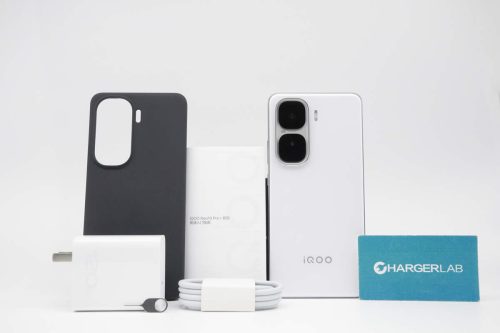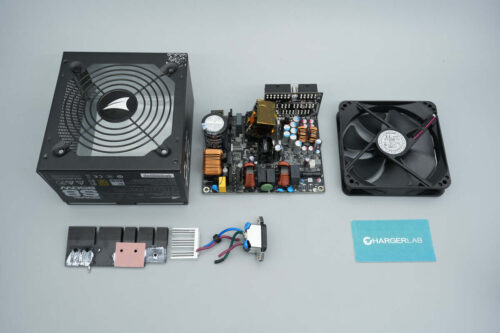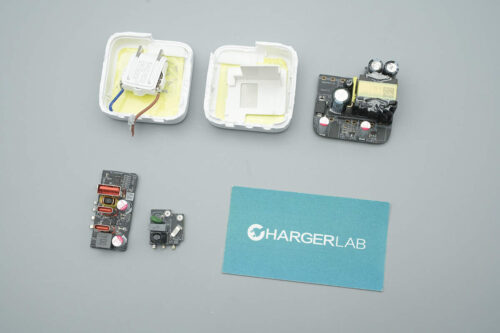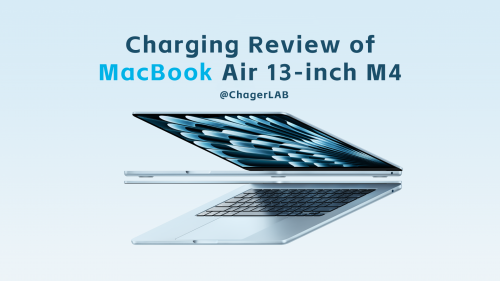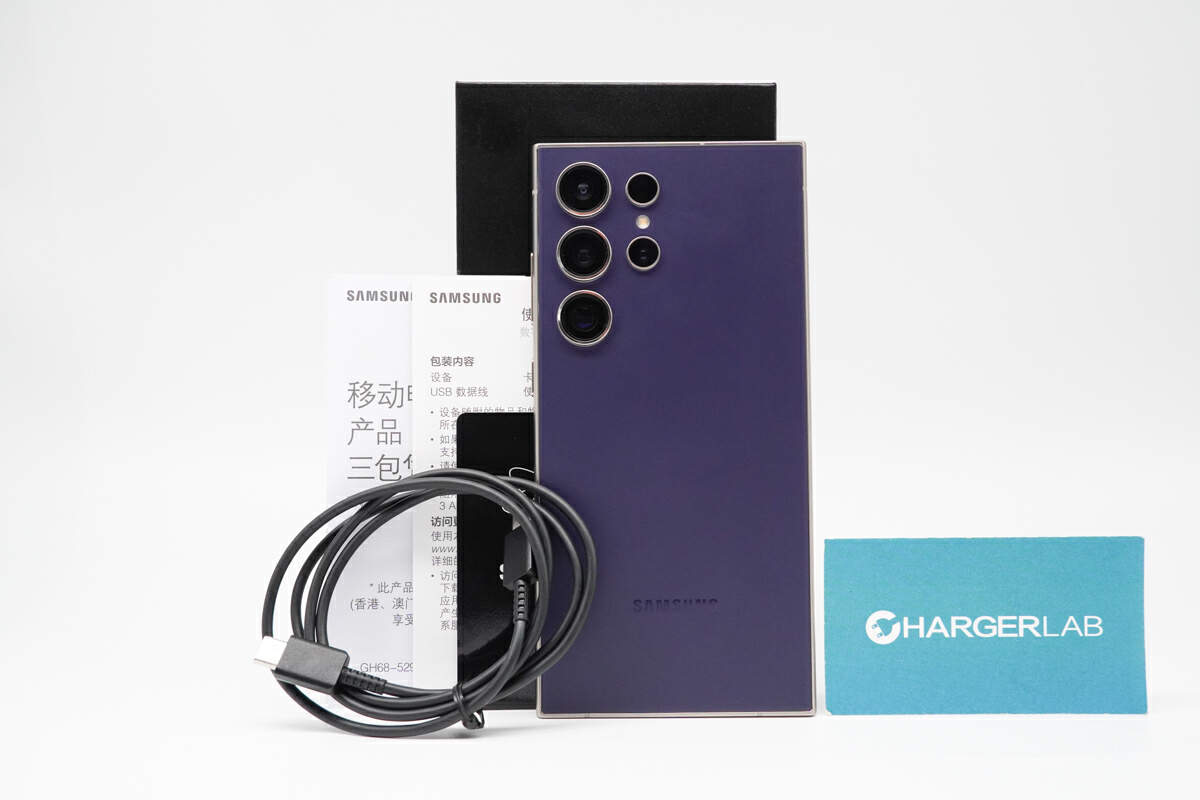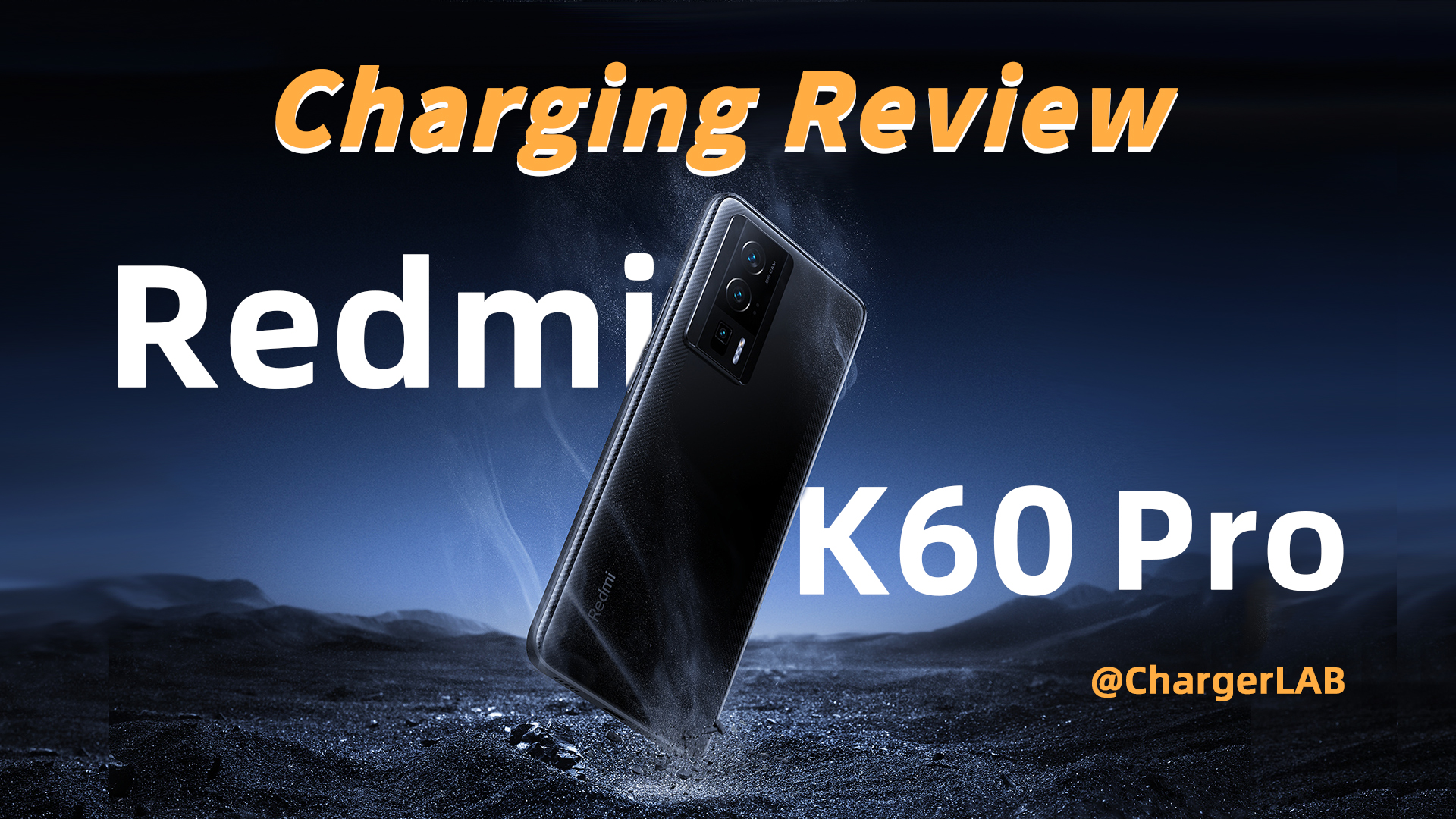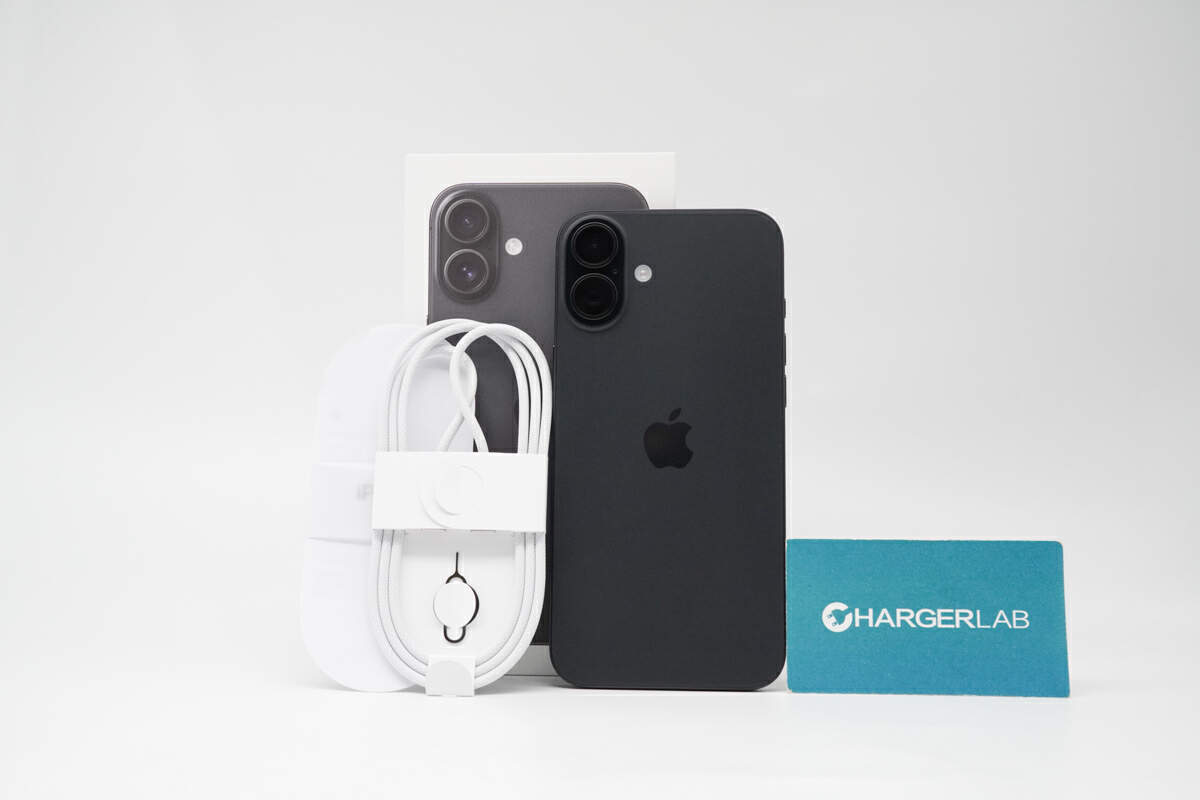Introduction
On May 20, the iQOO Neo10 Pro+ was officially launched. It is powered by the Snapdragon 8 Gen 3 Leading Edition processor and iQOO's self-developed Q2 esports chip, delivering robust performance. It features a 6.82-inch 2K display, offering 1800 nits of global brightness and up to 4500 nits of local peak brightness. It also includes a 6800mAh ultra-thin battery paired with 120W fast charging, enabling rapid power recovery. Next, let’s take a look at the charging performance.
Product Appearance
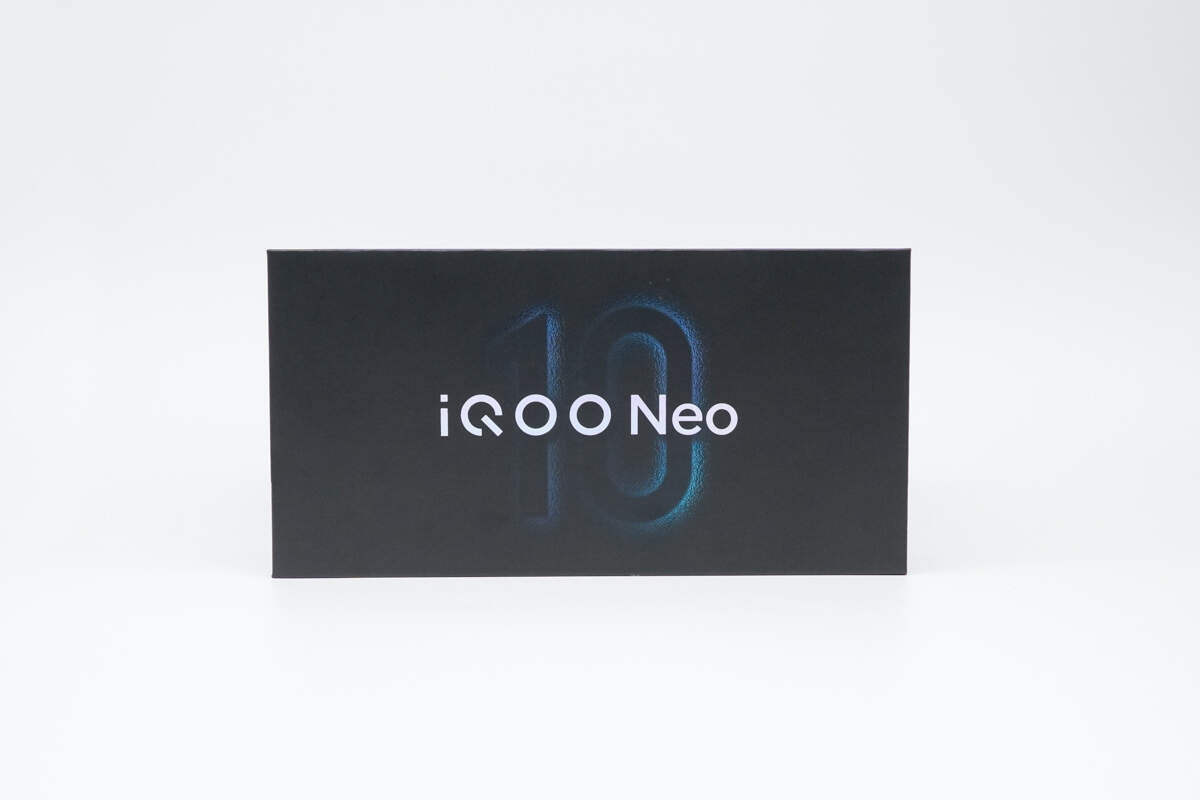
The packaging box is black with iQOO Neo and 10 printed on it.
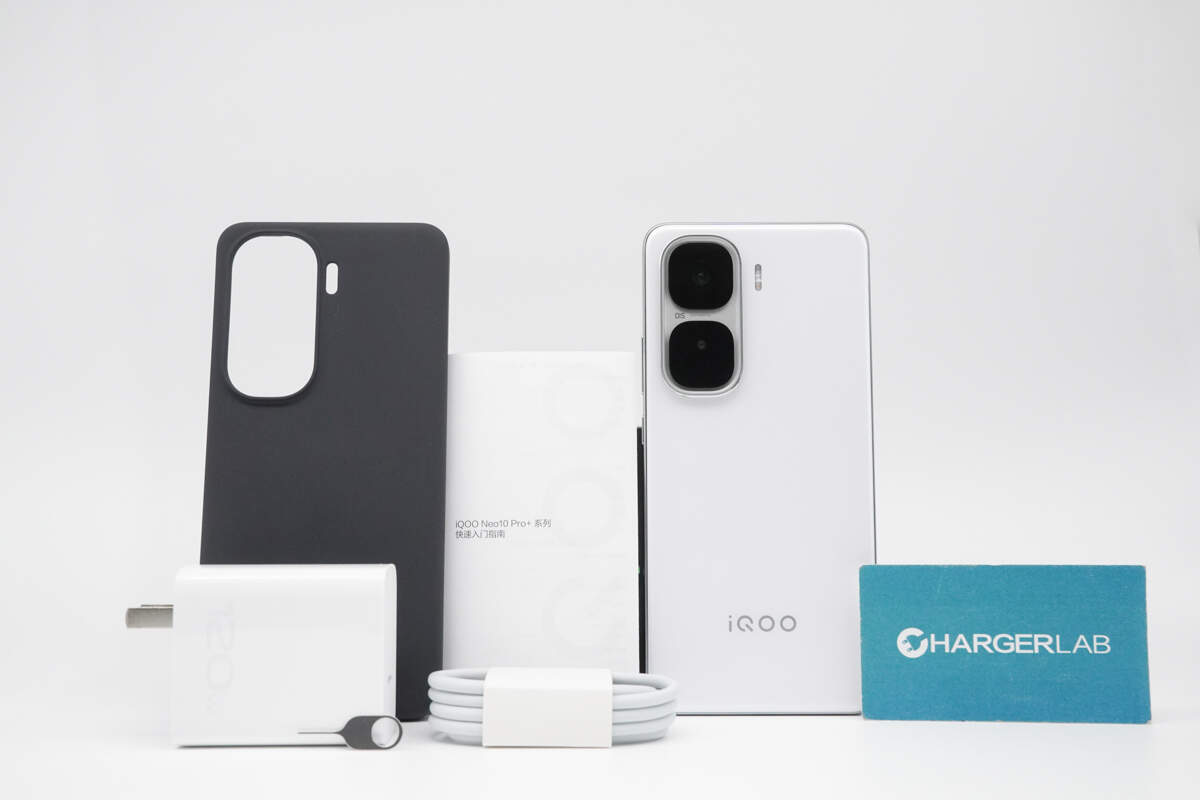
The box contains the iQOO Neo10 Pro+, a 120W charging set, a phone case, and some documents.
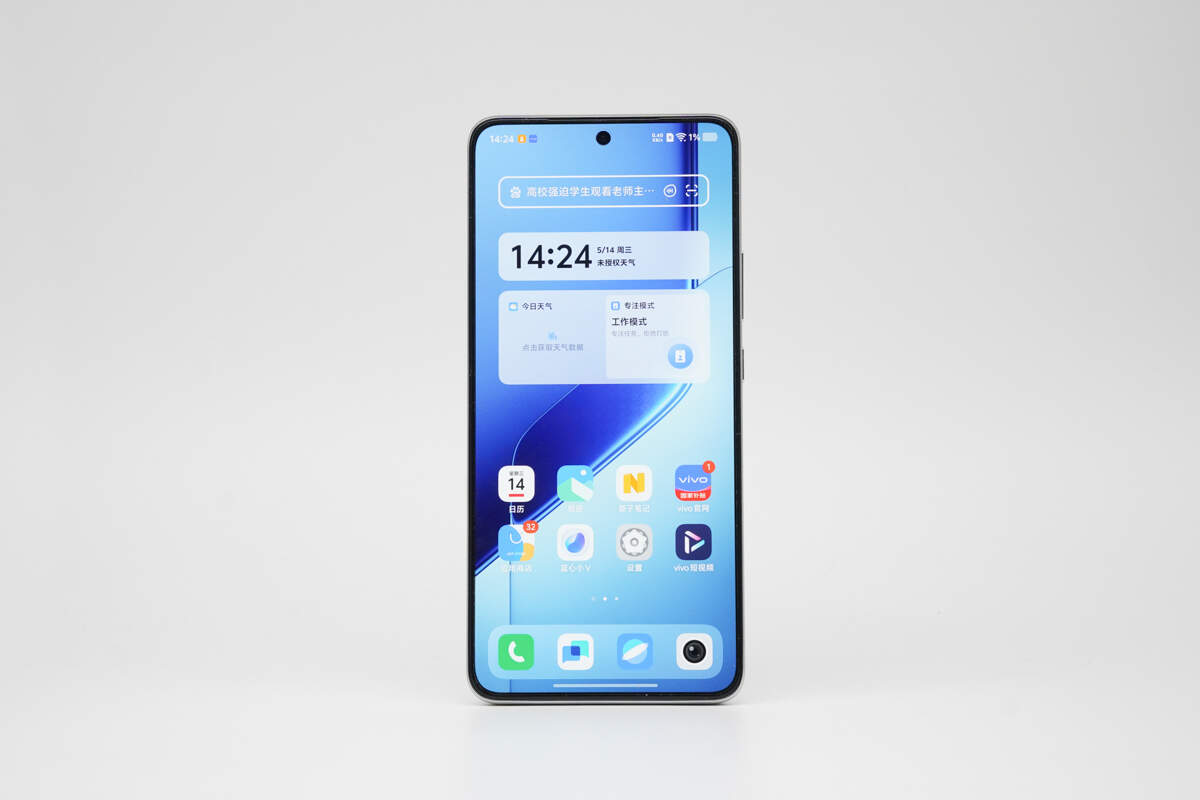
It features a 6.82-inch 2K display with a resolution of 3168×1440 and a pixel density of 510 PPI. The screen adopts LTPO technology, supporting a smart dynamic refresh rate from 1Hz to 144Hz. It covers the DCI-P3 color gamut, is HDR10+ certified, and delivers a peak brightness of up to 4500 nits and a contrast ratio of 8,000,000:1, providing an exceptional visual experience.

It is available in three colors: Black, White, and Blue.
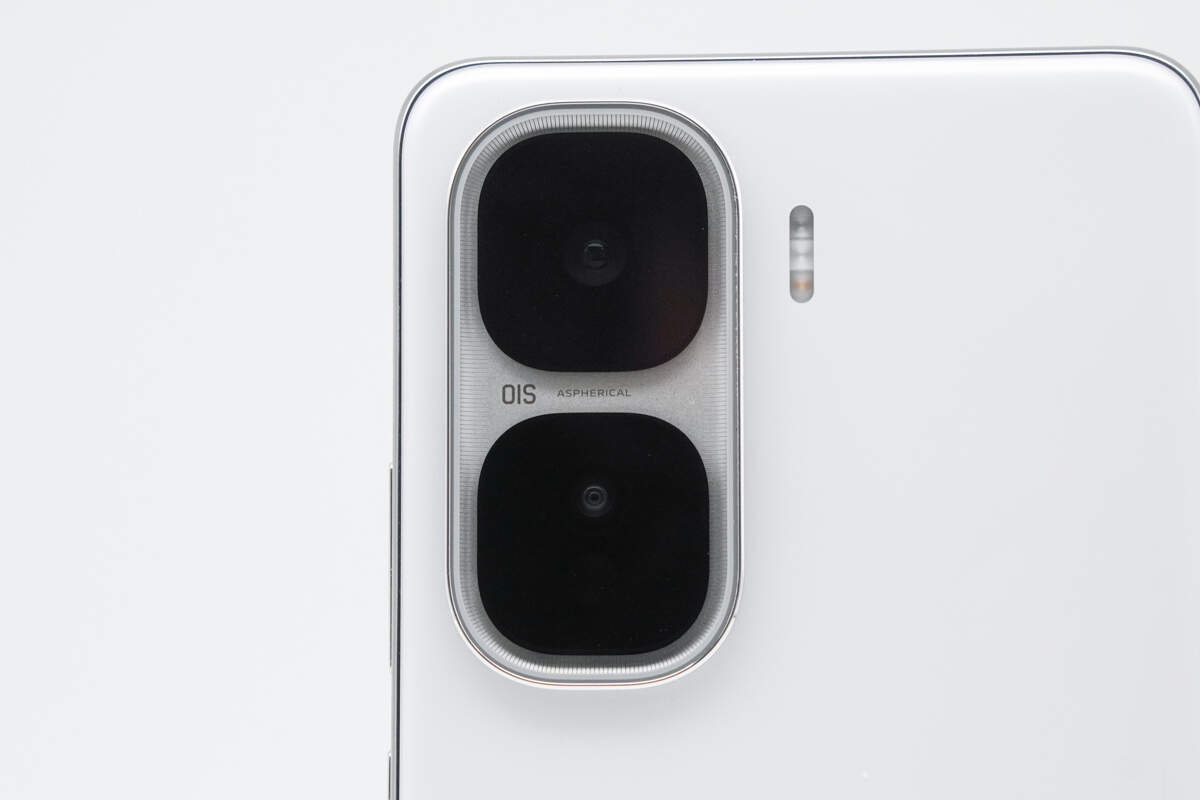
On the rear, it features a dual-camera setup consisting of a 50MP main camera and an 8MP ultra-wide-angle lens. On the front, it is equipped with a 16MP selfie camera.
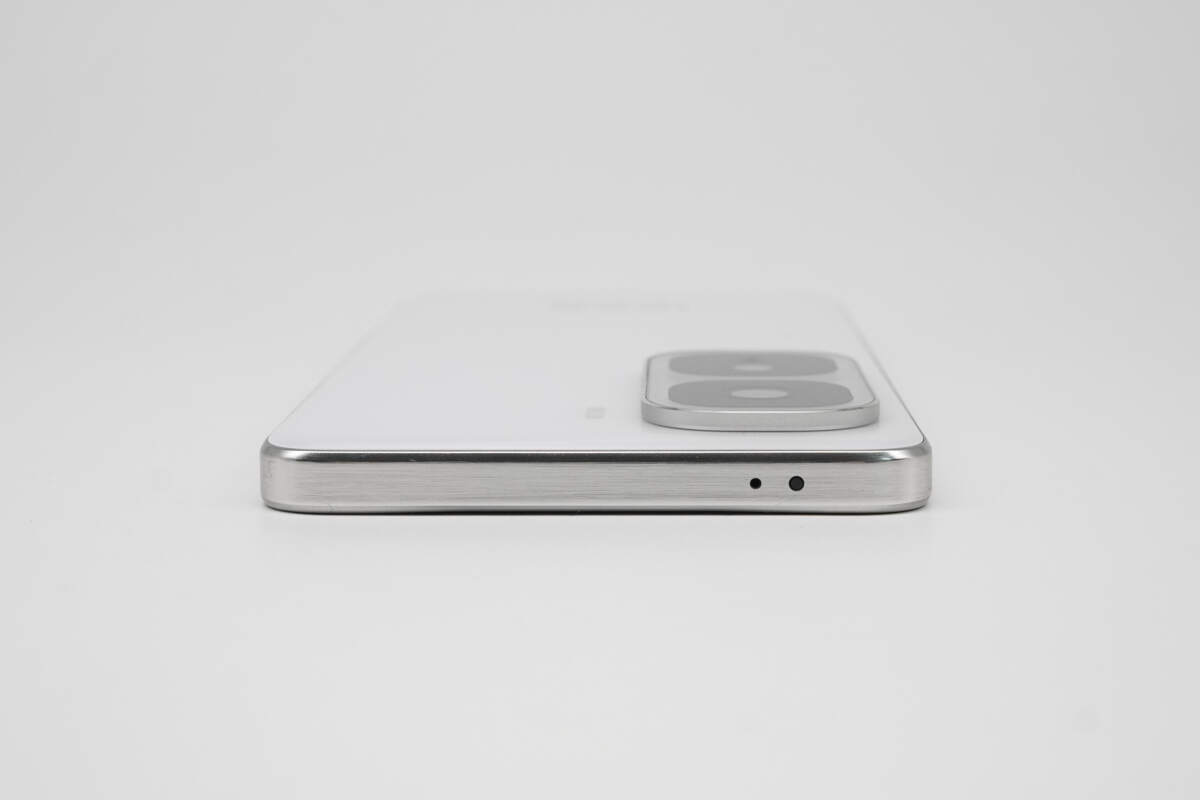
At the top, it is equipped with an infrared sensor, supporting the identification of household IR devices and enabling remote control functionality through device pairing.
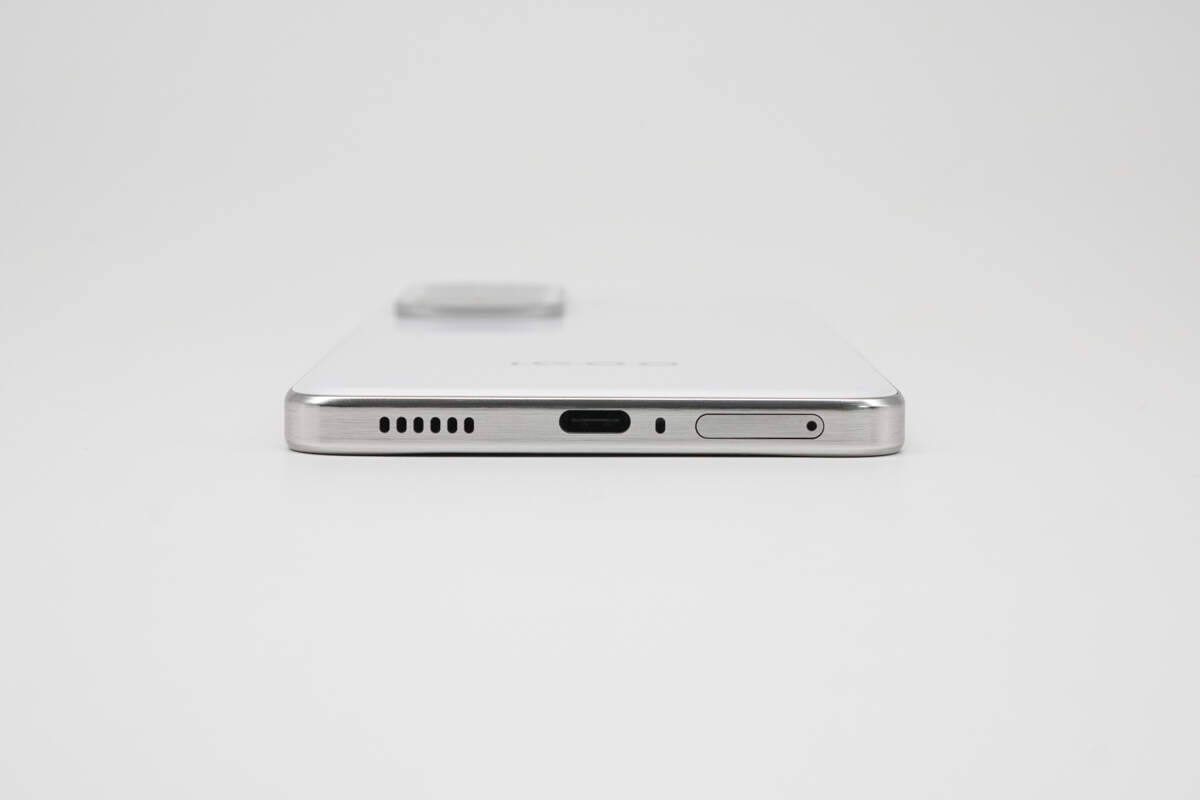
At the bottom, it houses a USB-C port, a speaker, a microphone, and a SIM card slot.
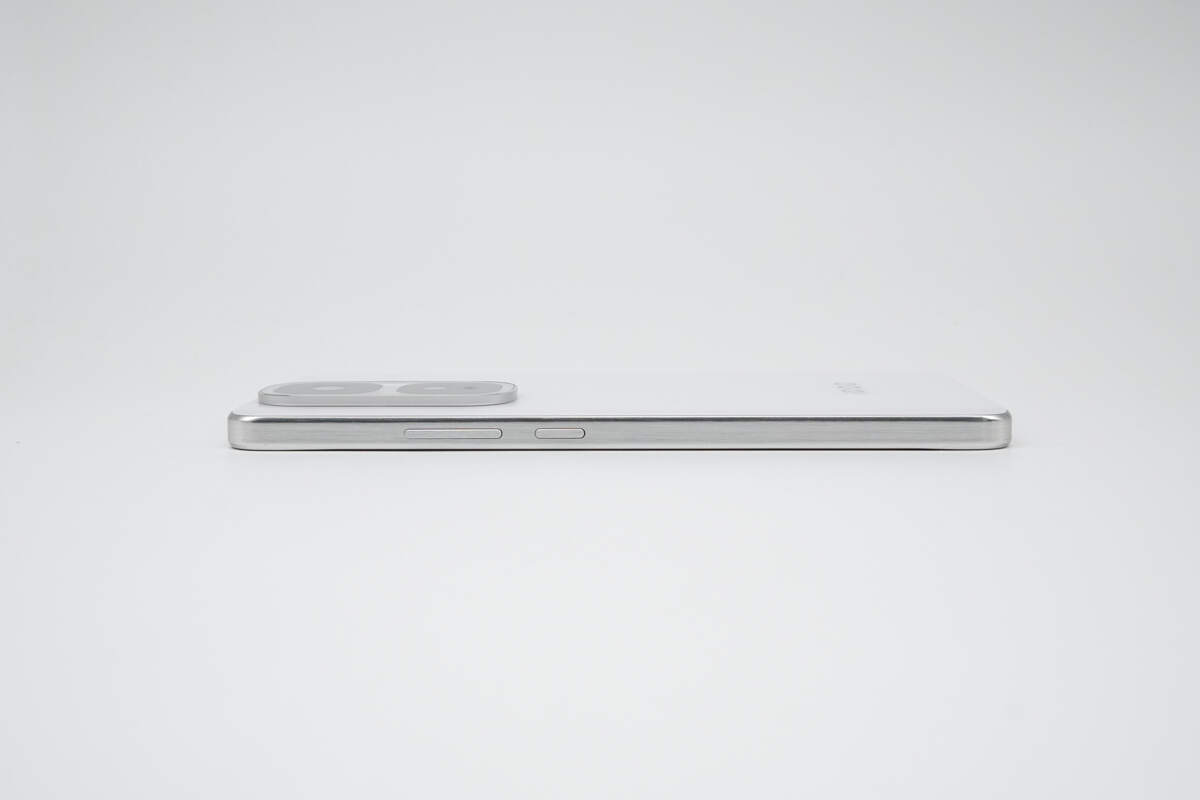
The right side includes the power button and volume button.
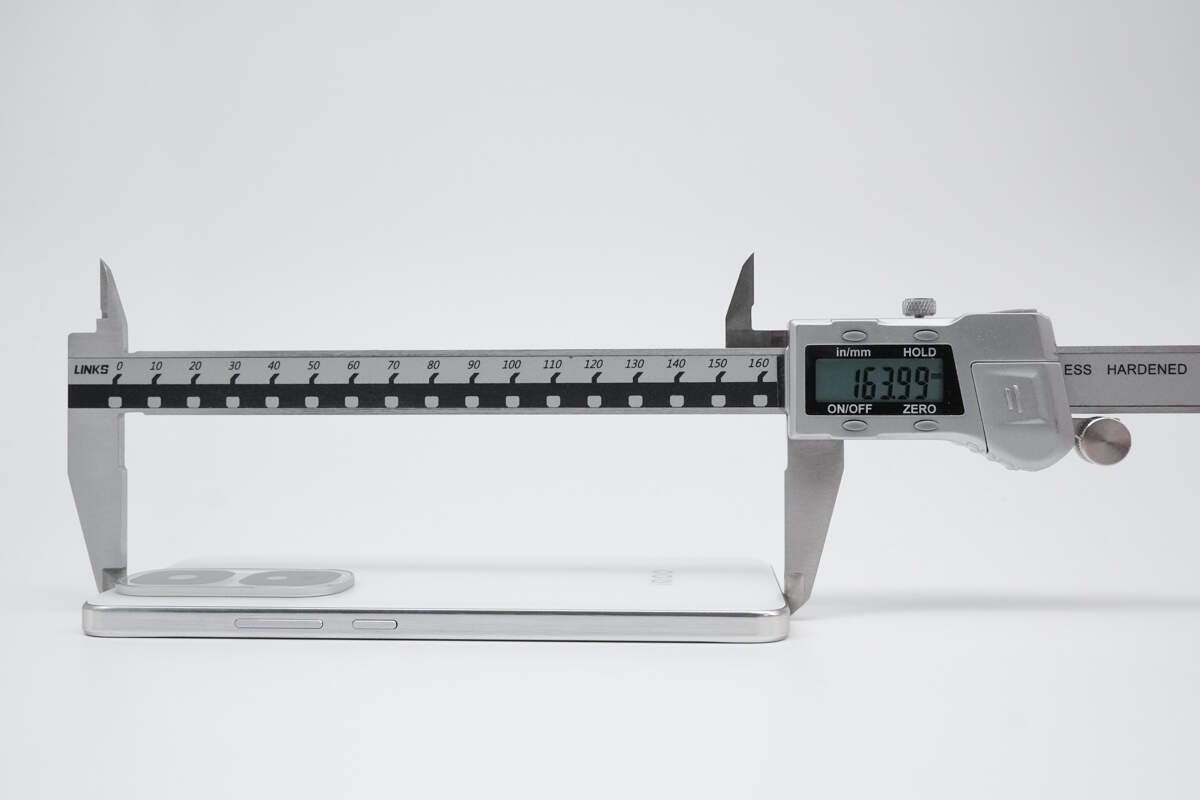
The length is about 163.99 mm (6.46 inches).
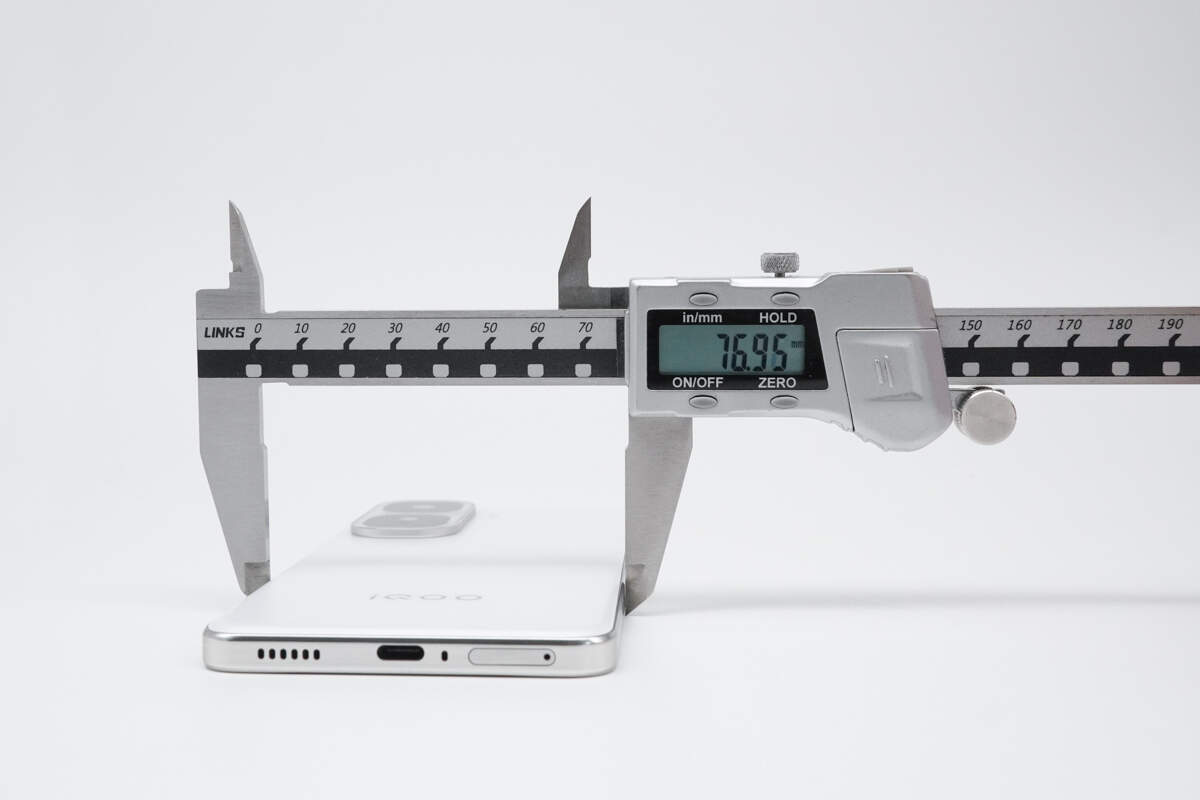
The width is about 76.95 mm (3.03 inches).
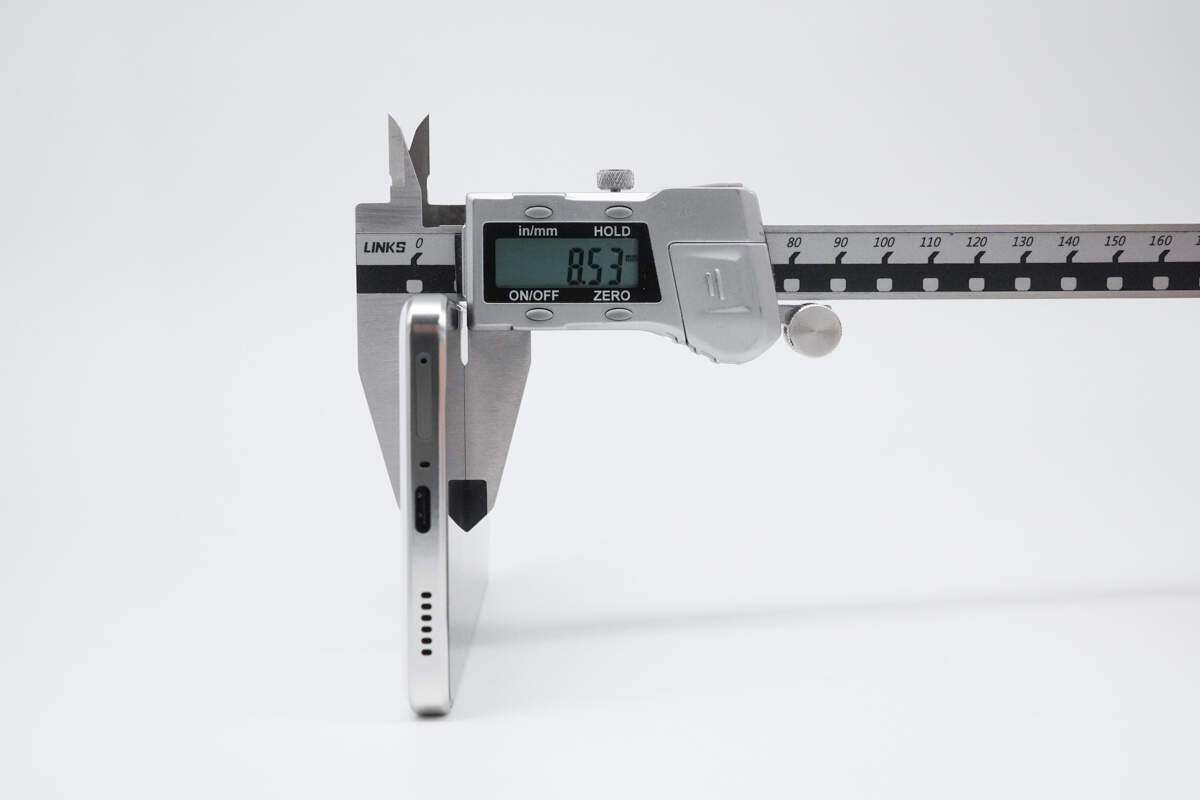
The thickness is about 8.53 mm (0.34 inches).
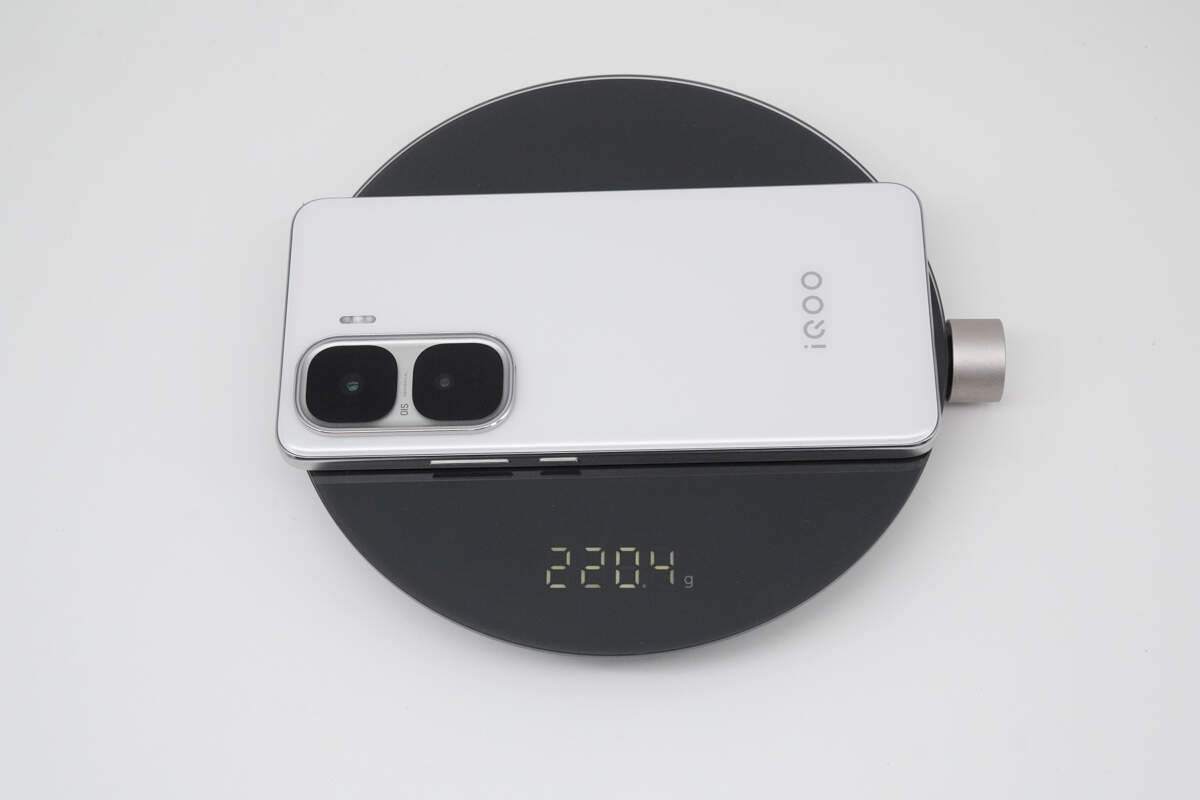
The weight is about 220.4 g (7.77 oz).

That's how big it is in the hand.
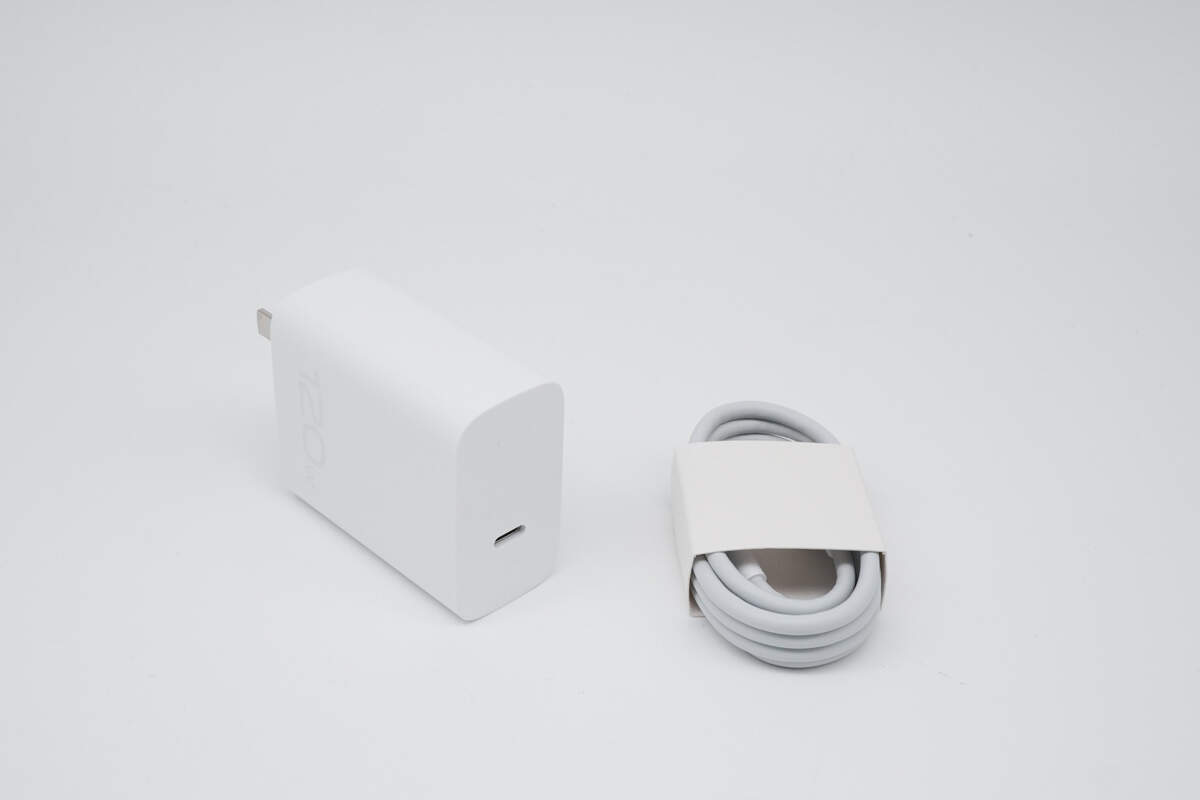
It comes with a 120W charging set.
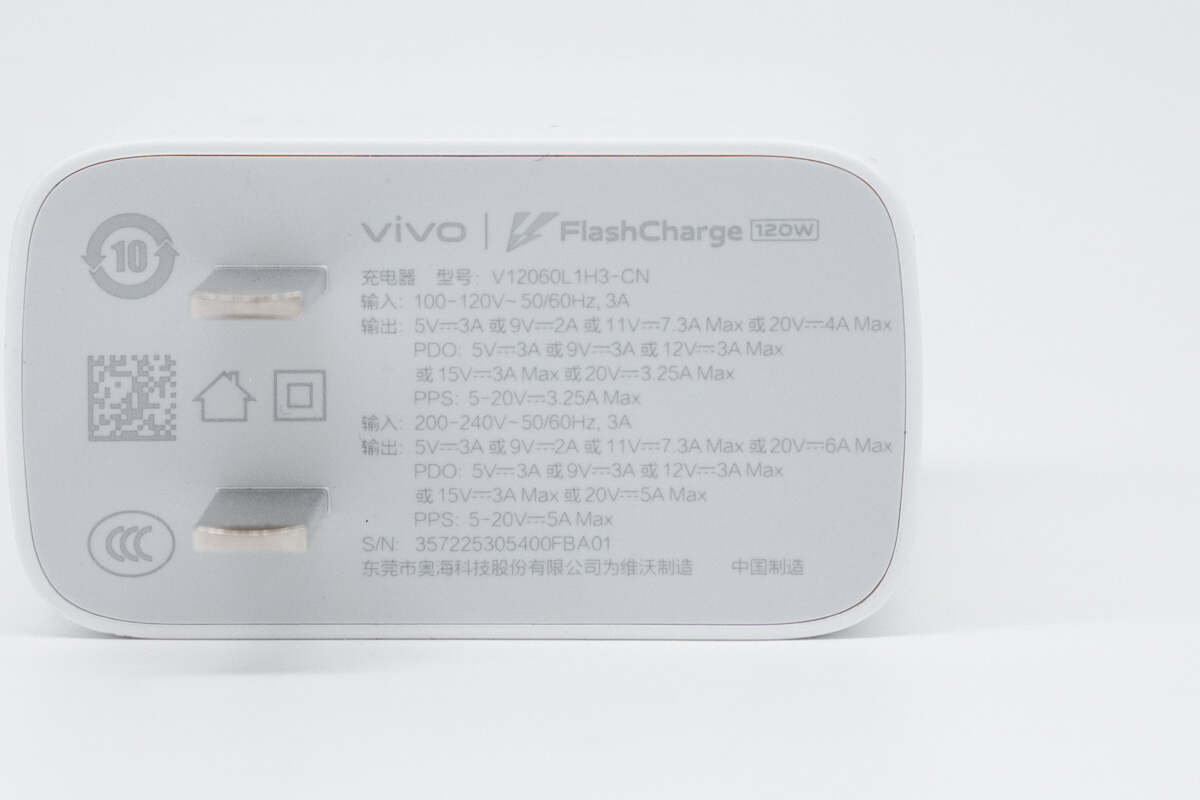
The spec info is printed here.
Model: V12060L1H3-CN
Input: 100-120V50/60Hz, 3A;
Output: 5V 3A or 9V 2A or 11V 7.3A Max or 20V 4A Max
PDO: 5V 3A or 9V 3A or 12V 3A Max or 15V 3A Max or 20V 3.25A Max
PPS: 5-20V 3.25A Max
Input: 200-240V50/60Hz, 3A;
Output: 5V 3A or 9V 2A or 11V 7.3A Max or 20V 6A Max
PDO: 5V 3A or 9V 3A or 12V 3A Max or 15V 3A Max or 20V 5A Max
PPS: 5-20V 5A Max
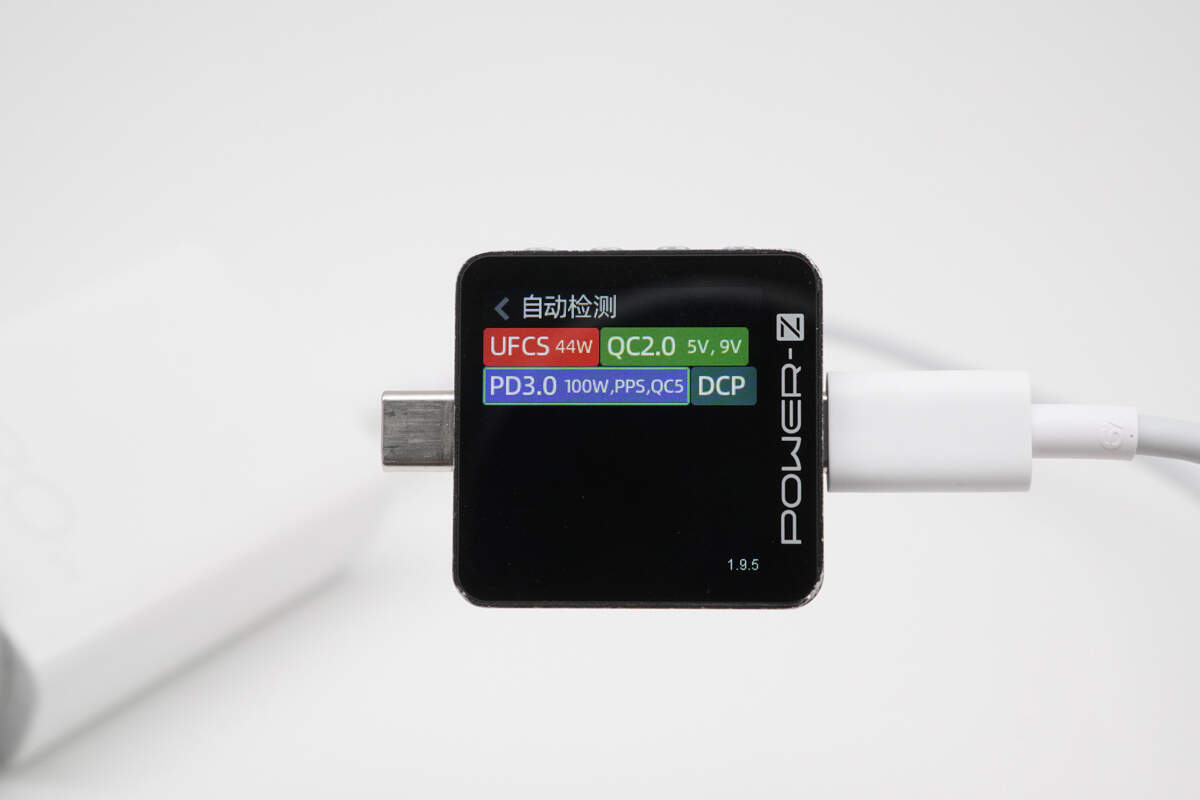
ChargerLAB POWER-Z KM003C shows it supports UFCS, QC2.0, PD3.0, QC5, DCP, and PPS charging protocols.
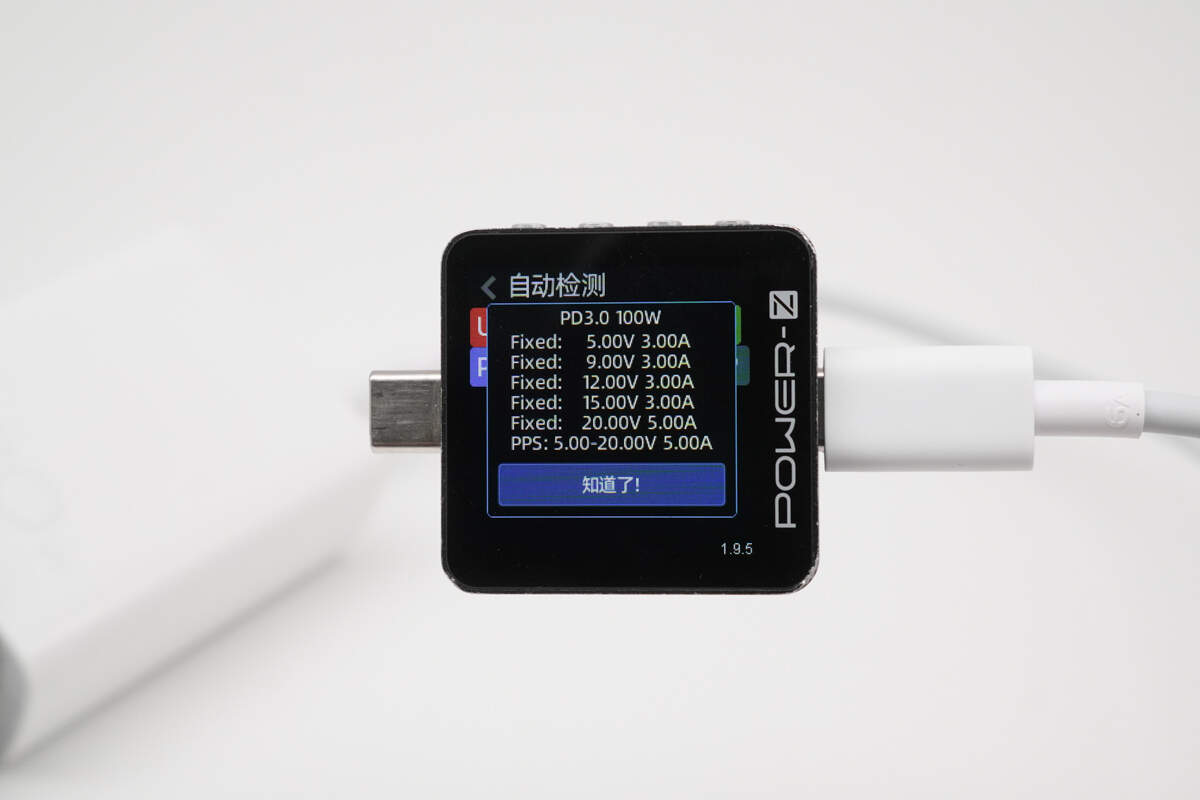
It also supports five fixed 5V3A, 9V3A, 12V3A, 15V3A, and 20V5A. It has one set of PPS, which is 5-20V 5A.
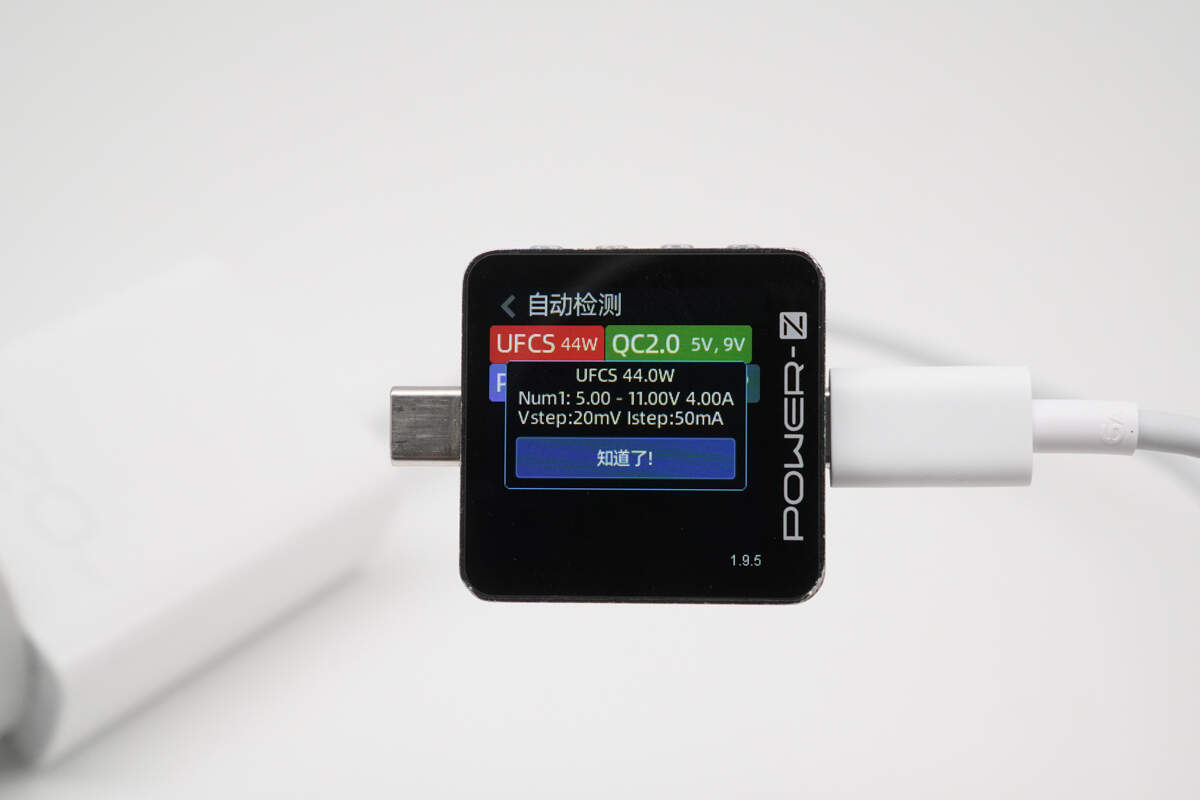
It supports a maximum UFCS output of 44W, has one PDO of 5-11V 4A. Vstep is 20mV and Istep is 50mA.
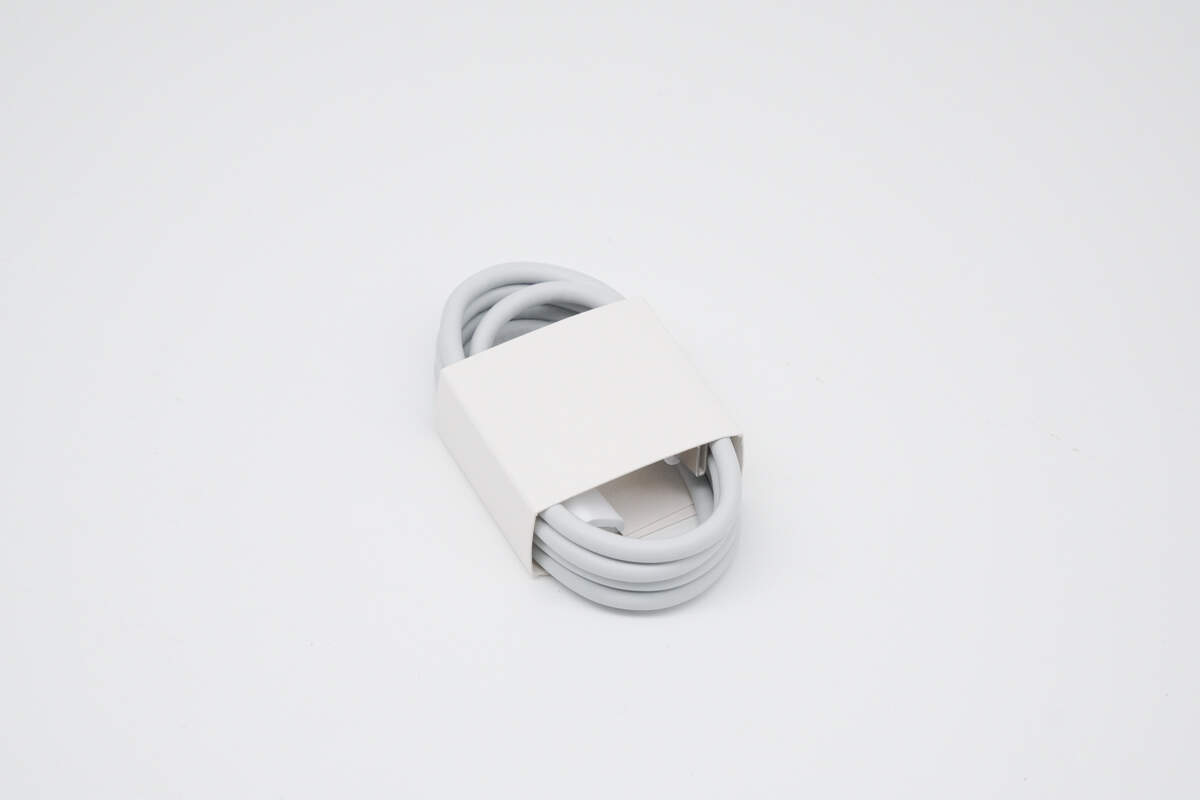
The dual USB-C cable is secured with a white paper strip.
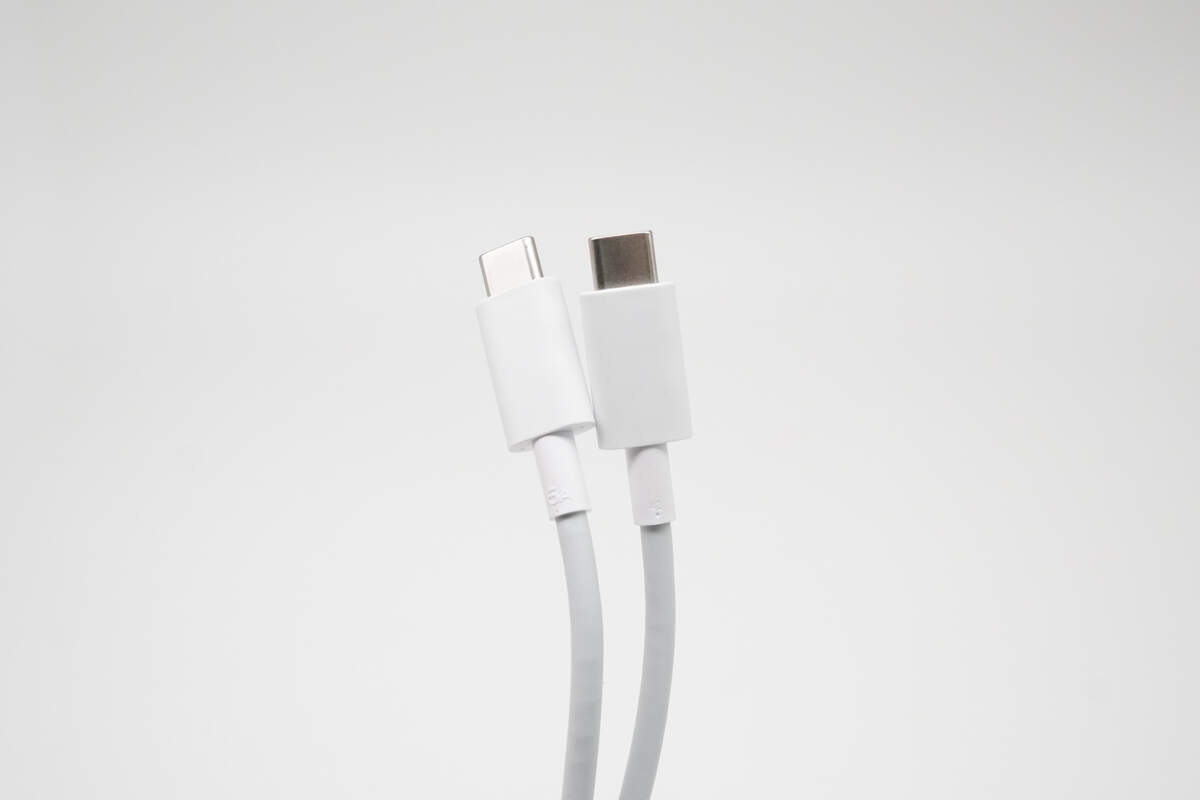
6A is printed on the connector.
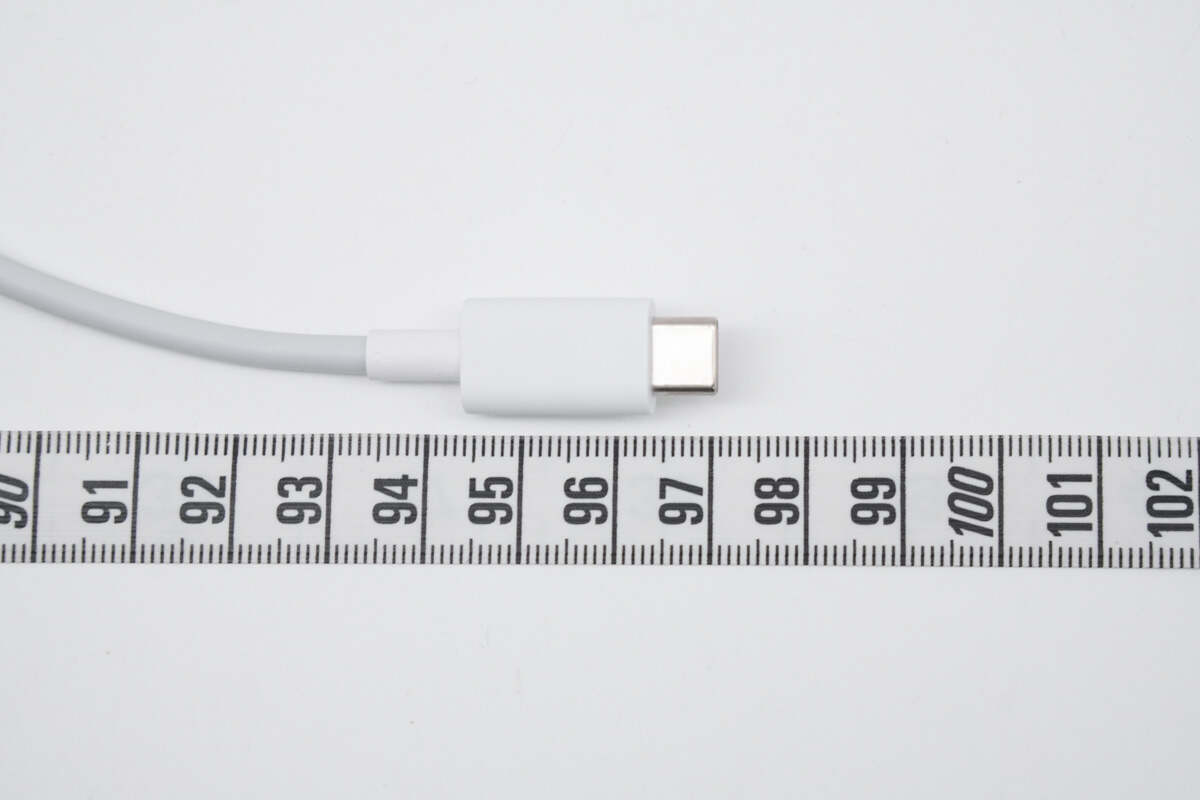
The length is about 1 meter.
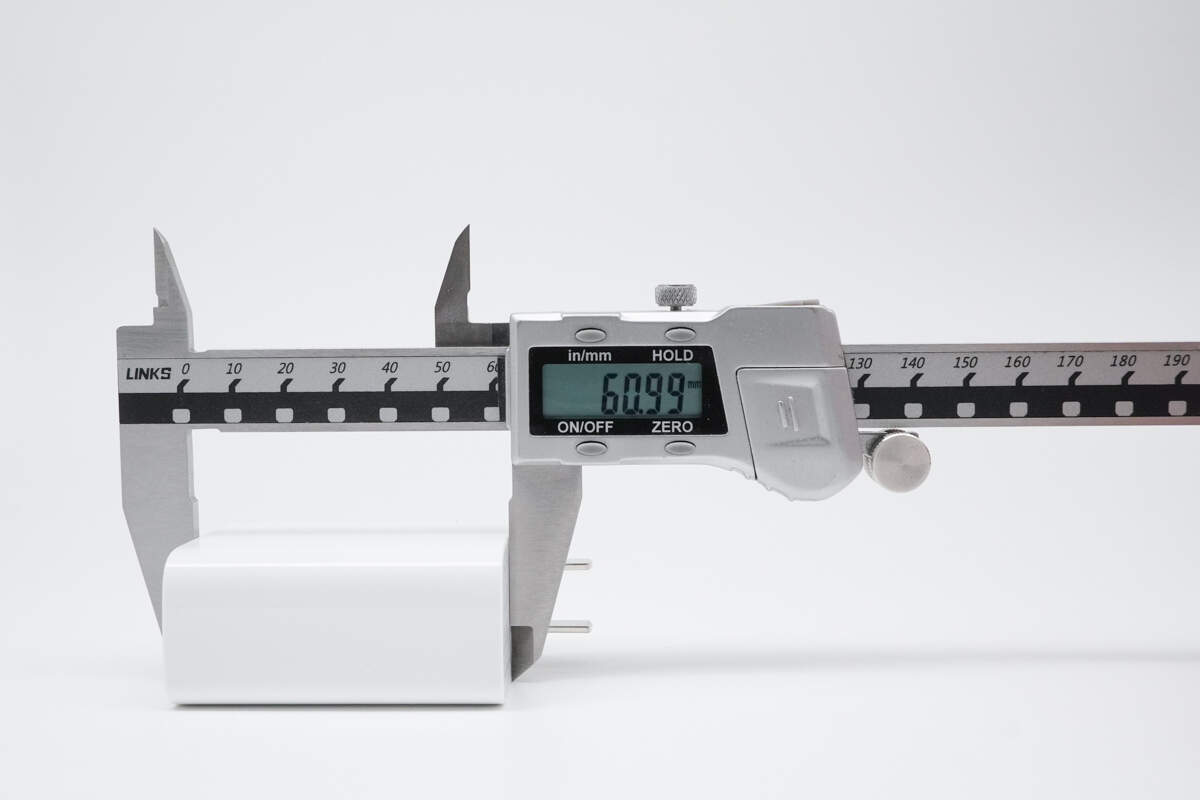
The length of the charger is about 60.99 mm (2.4 inches).
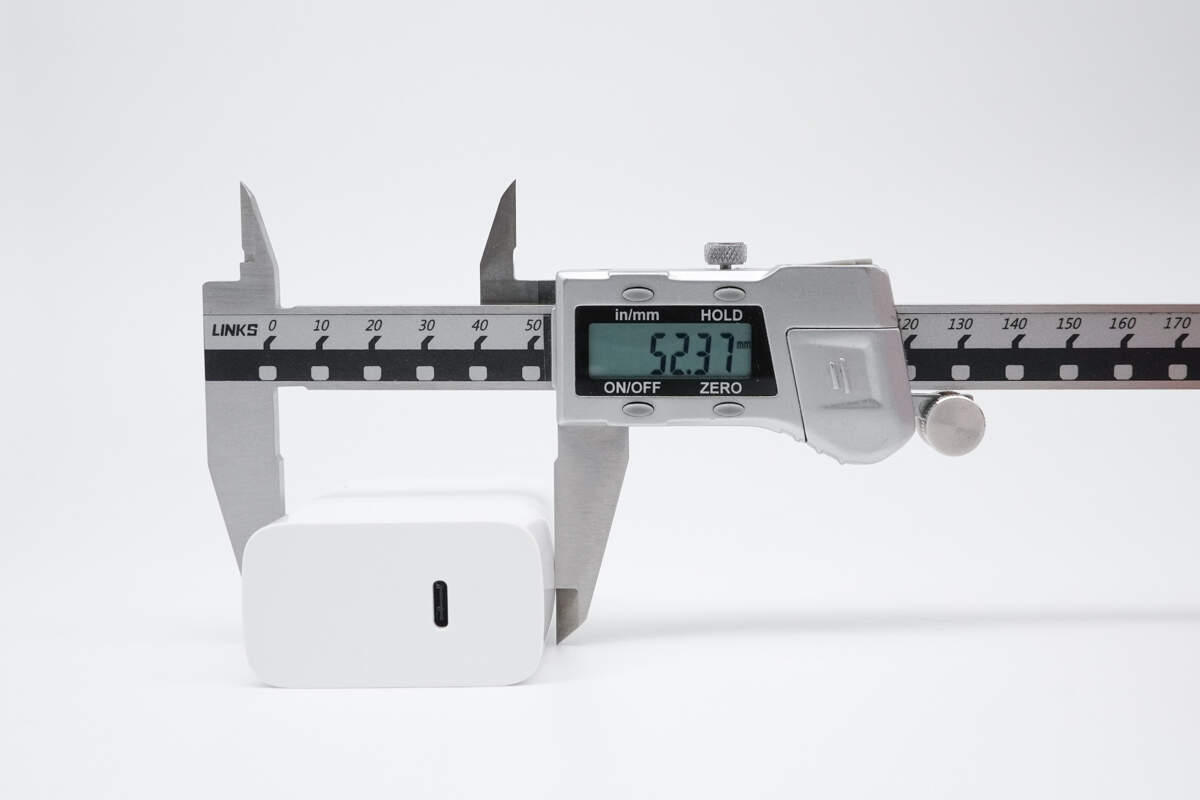
The width is about 52.37 mm (2.062 inches).
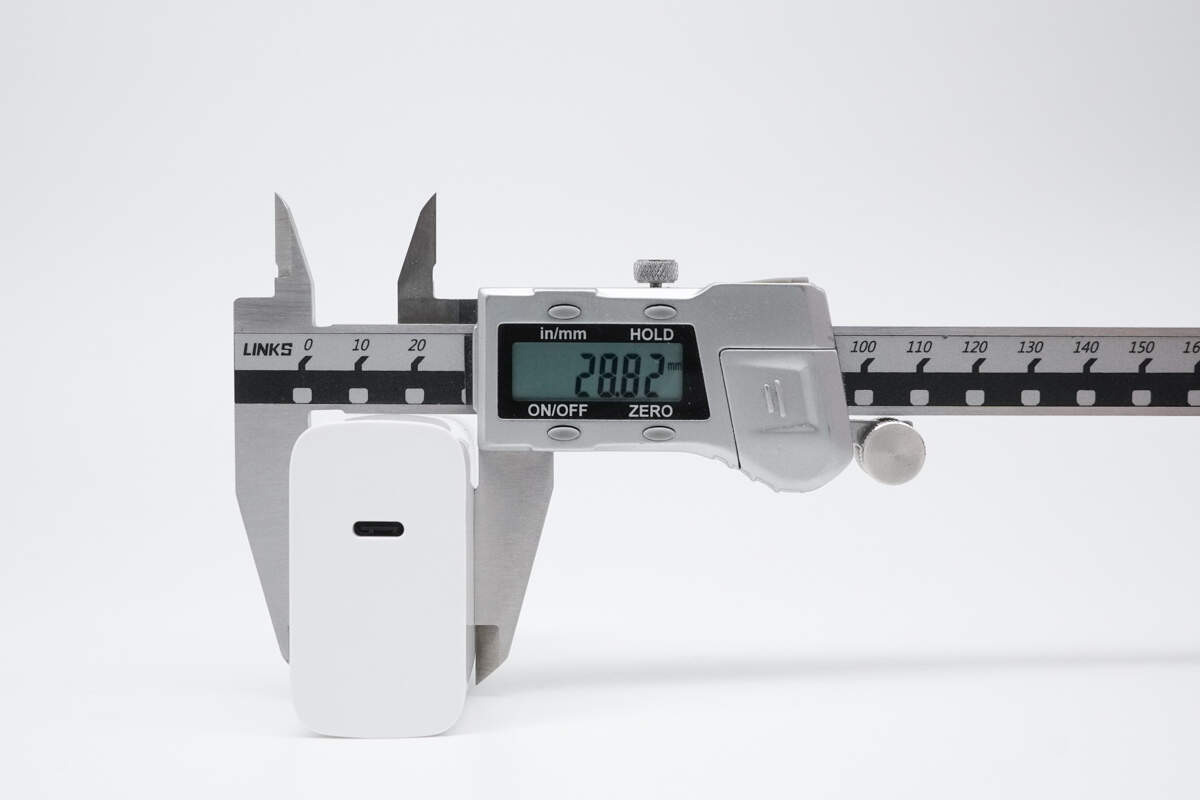
The thickness is about 28.82 mm (1.13 inches), the volume is about 92.05cm³, and based on the power of 120W, the power density is about 1.3W/cm³.
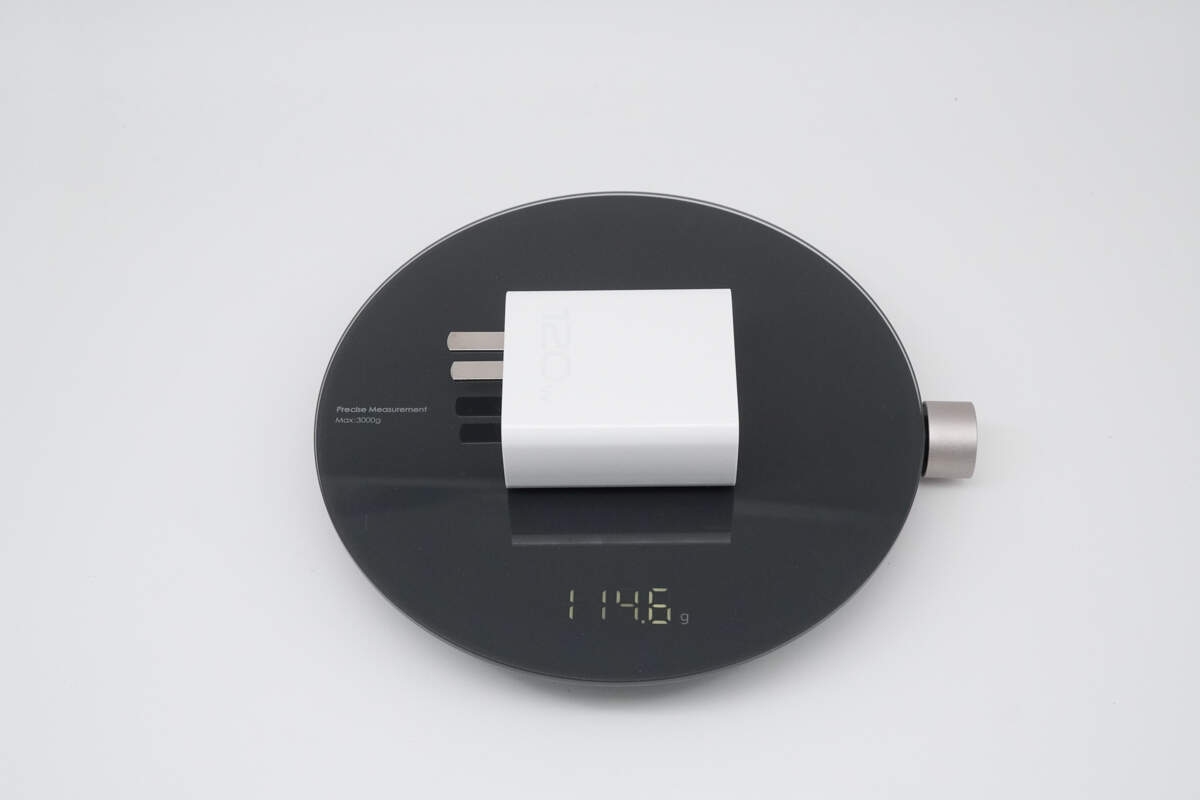
The weight is about 114.6 g (4.042 oz).
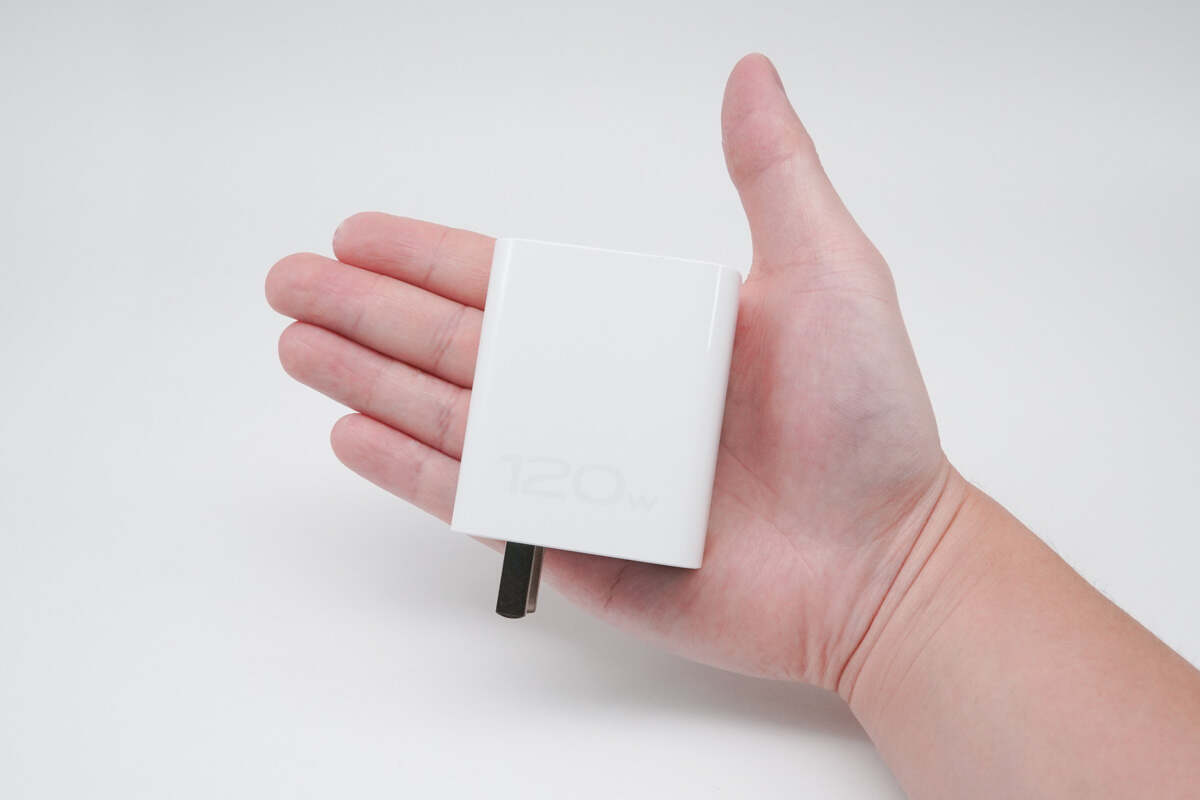
That's how big it is in the hand.
Compatibility Test
Next, let's do the charging compatibility test.
Original Chargers
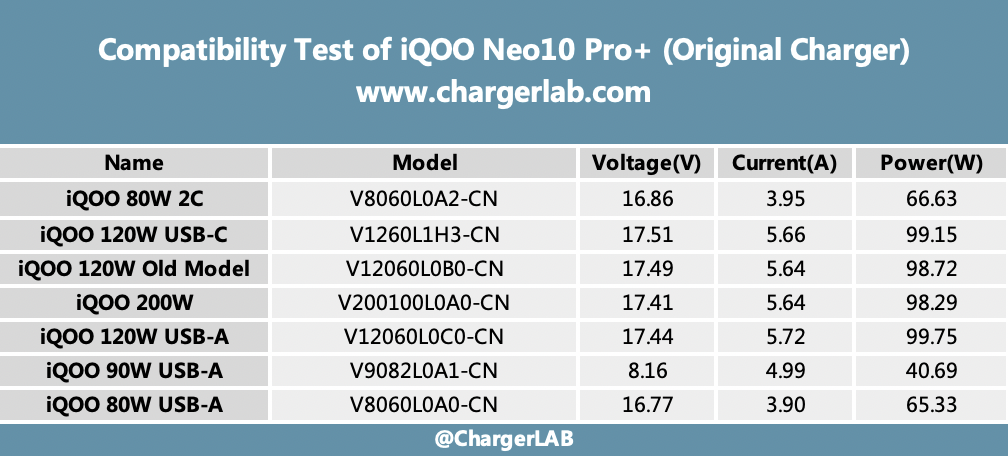
The voltage of all tested chargers except the 90W charger reaches 17 to 18V.
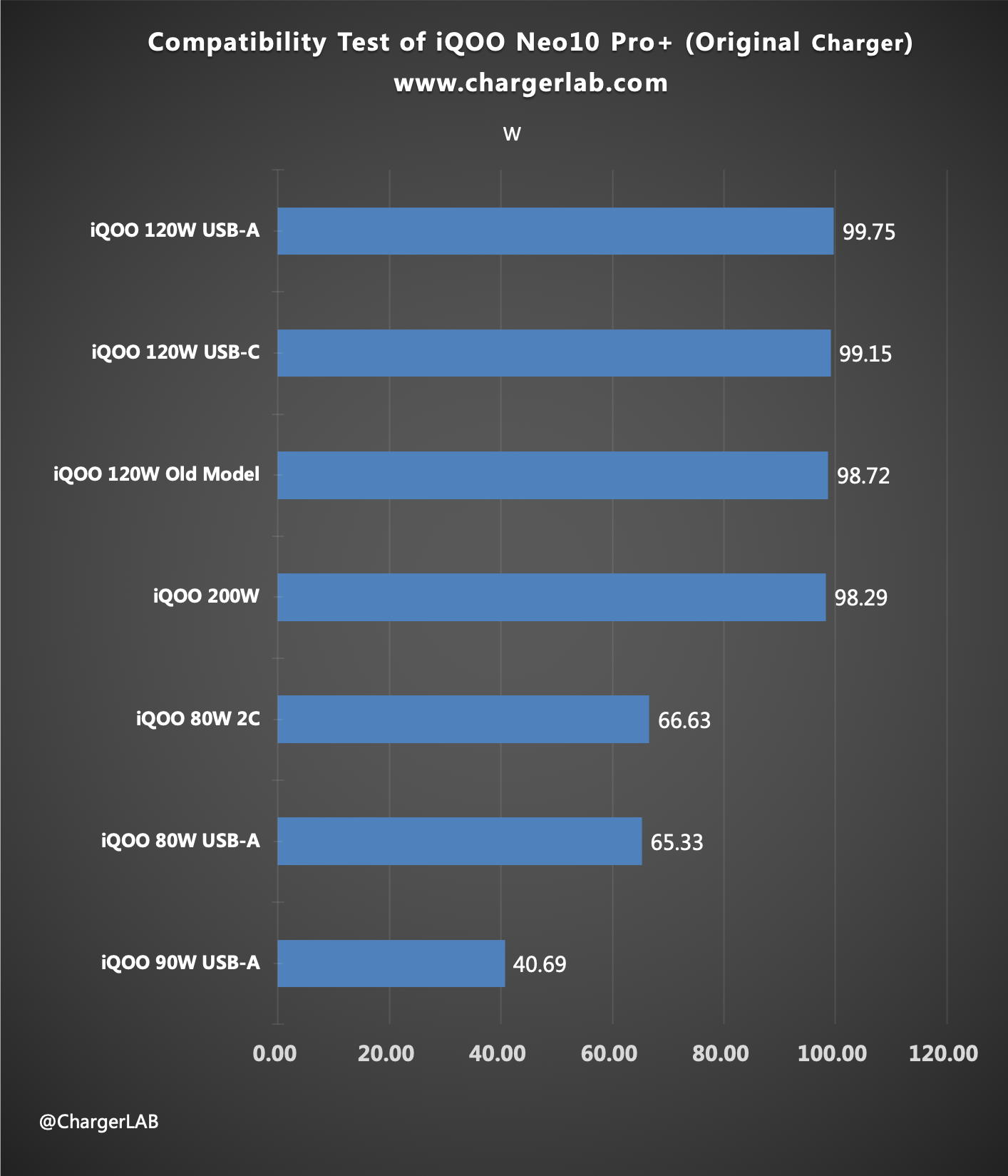
Summarize all test results into a bar graph. The lowest charging power is 40.69W, and the highest is 99.75W. The four chargers above 120W can reach a power of nearly 100W.
Third-party Chargers
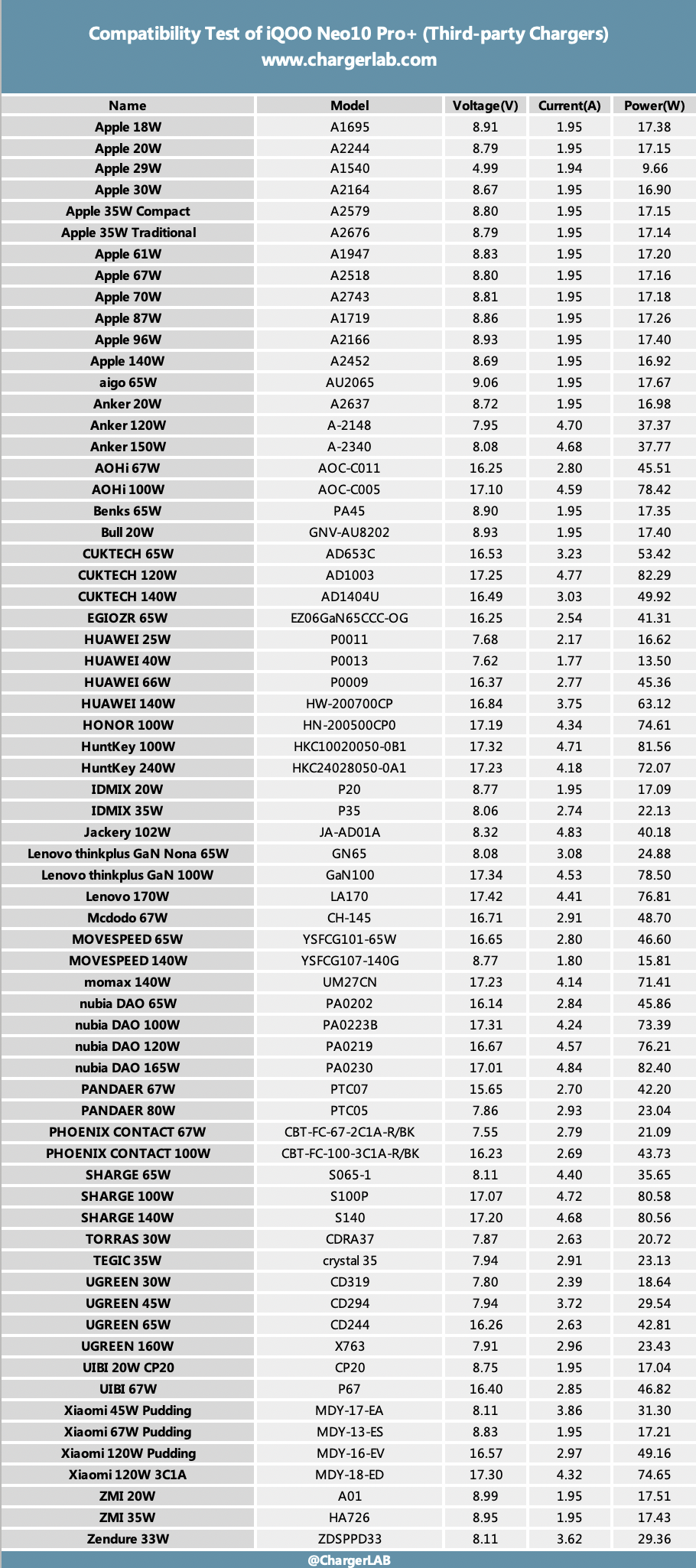
The tested chargers basically reached a voltage of 9 to 18V, and the current was above 1.95A.
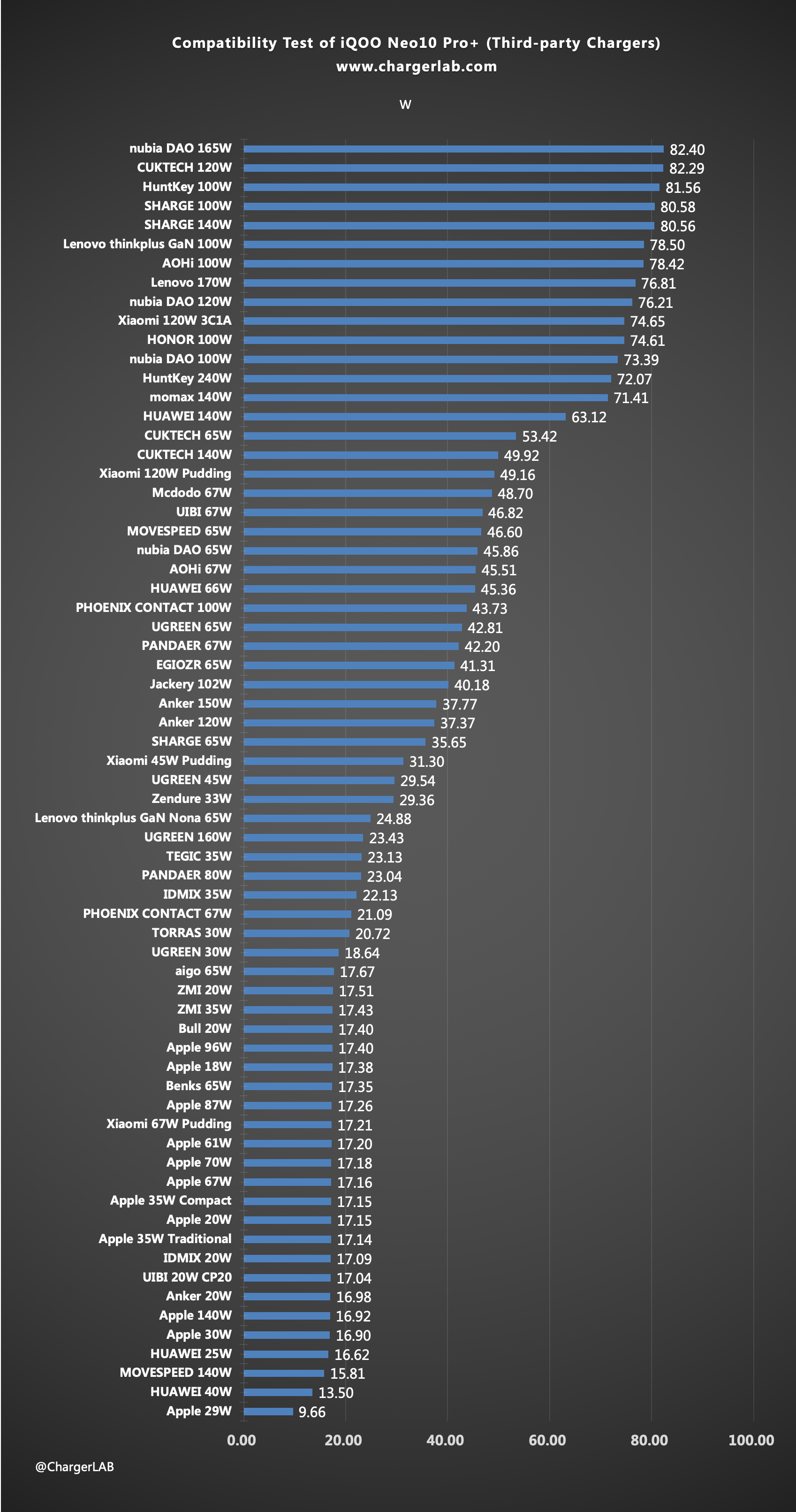
The data is summarized in a bar graph, and there is no compatibility issue. The charging power is mainly concentrated at several levels: 15 to 18W, 20 to 30W, 35 to 50W, and 70 to 85W. The highest charging power is 82.4W.
Power Banks
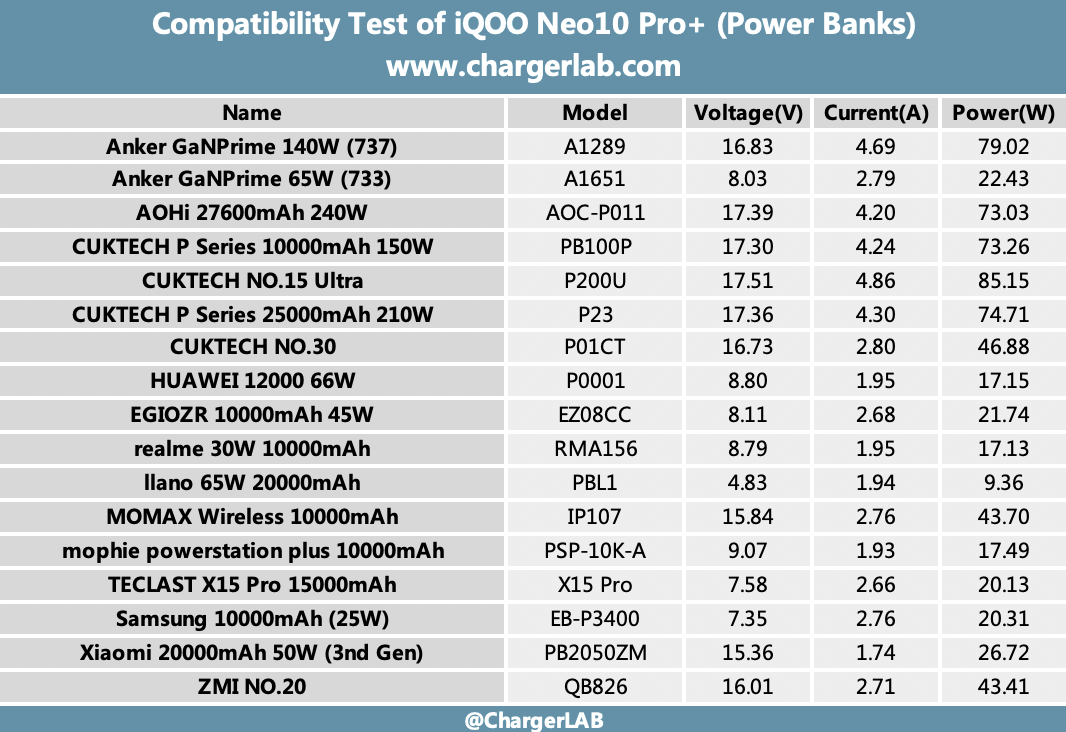
The tested power banks basically reached a voltage of around 9V or 17V, and a current of 1.74 to 4.86A.
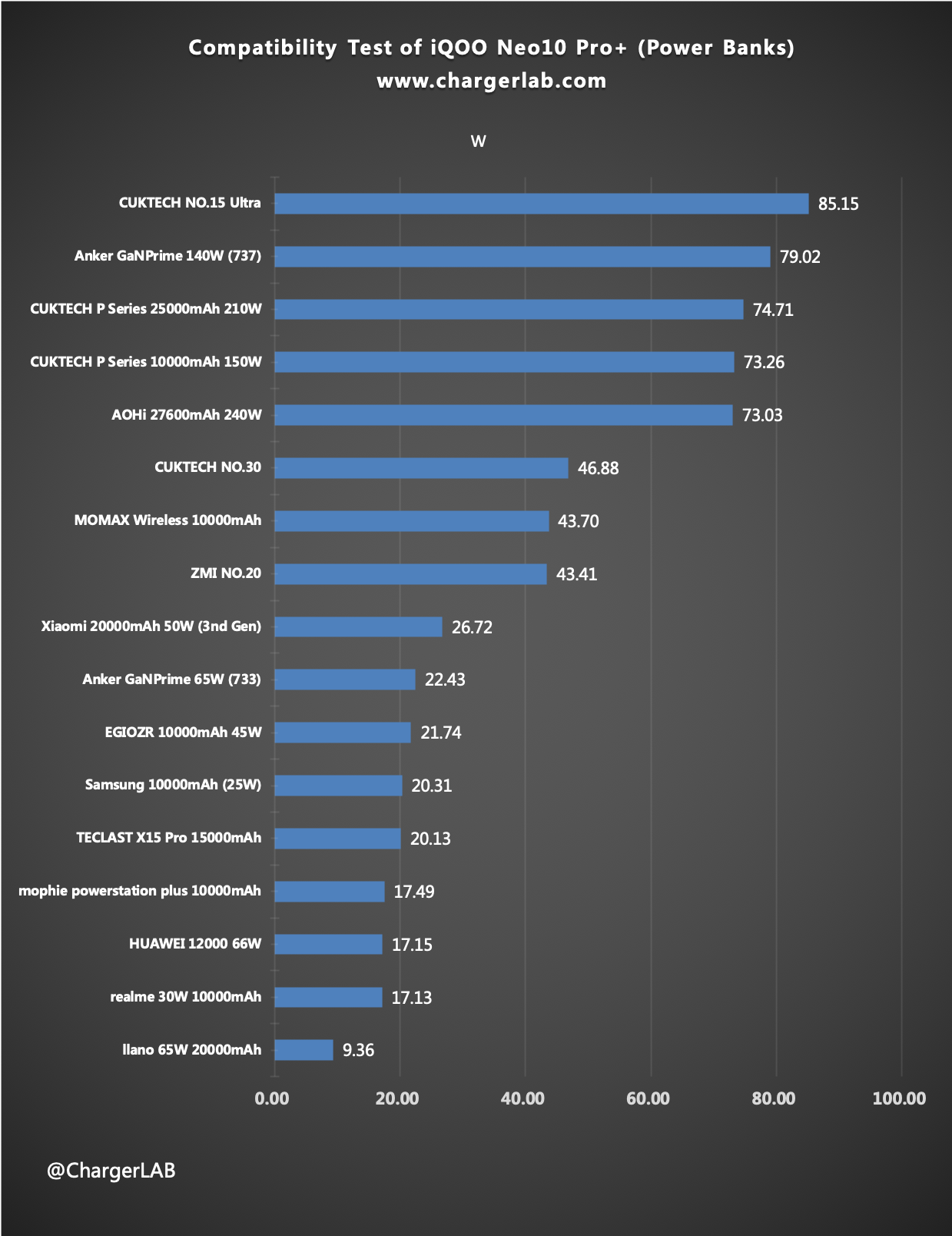
The data is summarized in a bar graph, and there is no compatibility issue. The charging power is mainly concentrated at several levels: 15 to 18W, 20 to 30W, 35 to 50W, and 70 to 85W. The highest charging power is 85.15W.
Full Charging Test
We use the original charger to charge the iQOO Neo10 Pro+ fully. And put them into a 25°C (77℉) thermotank throughout the test.
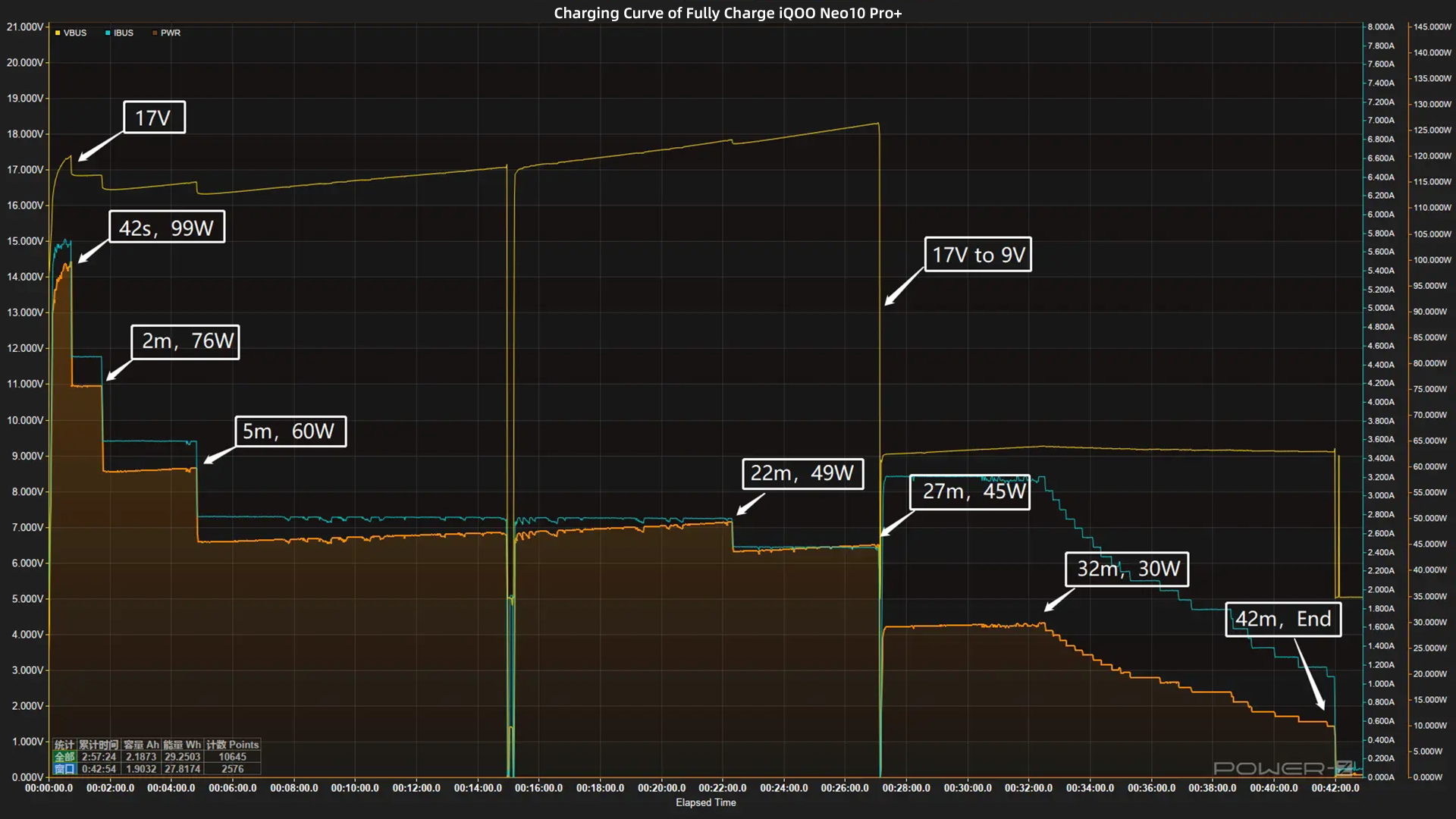
The voltage is around 17V at first. The charging curve can be divided into seven parts. The peak power is around 99W for the first 42 seconds. Then, the power gradually drops to 76W, 60W, 49W, 45W, and 30W in turn. During the process, the voltage drops to 9V. The final part begins at 32 minutes, and the power drops to almost zero. It takes 42 minutes to be fully charged.
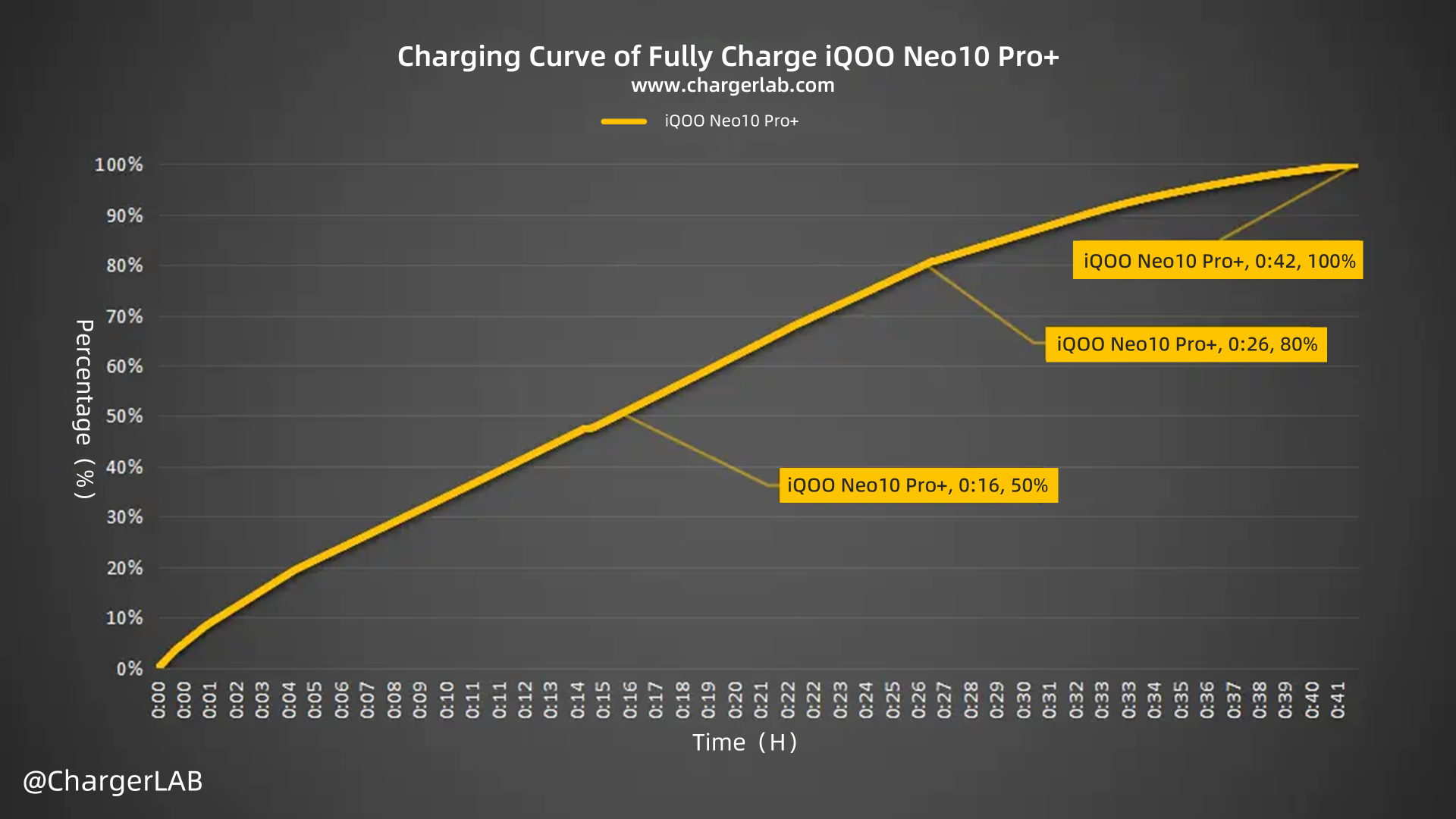
We also turn it into another curve. It reaches 50% in 16 minutes. And it can reach 80% in 26 minutes, 100% in 42 minutes.
Temperature Test
We also recorded the highest temperature on the front and back after charging for 10 minutes, 20 minutes, and 30 minutes.
10 minutes Charging
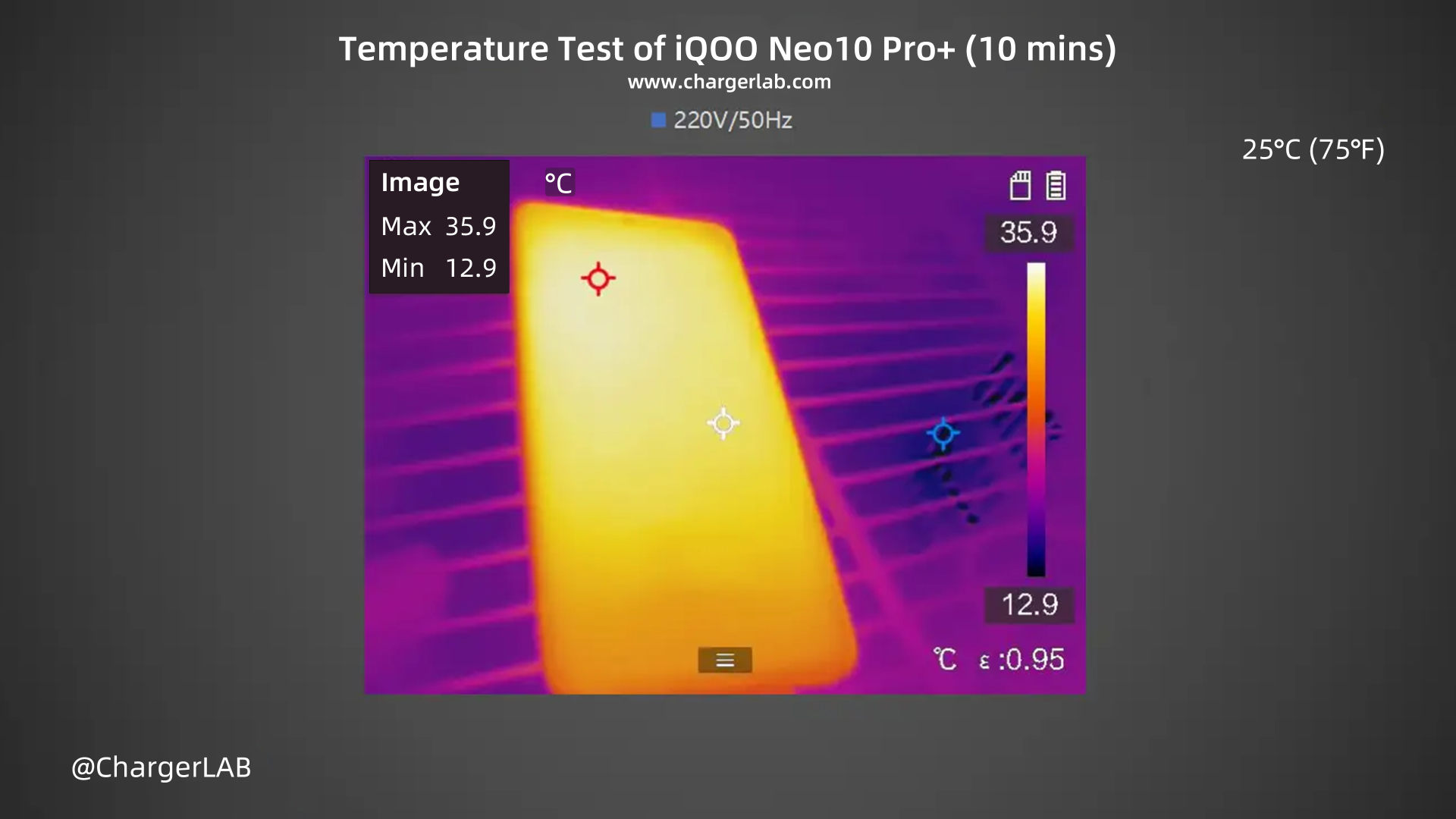
After 10 minutes, the maximum temperature on the front is 35.9℃ (96.62 ℉).
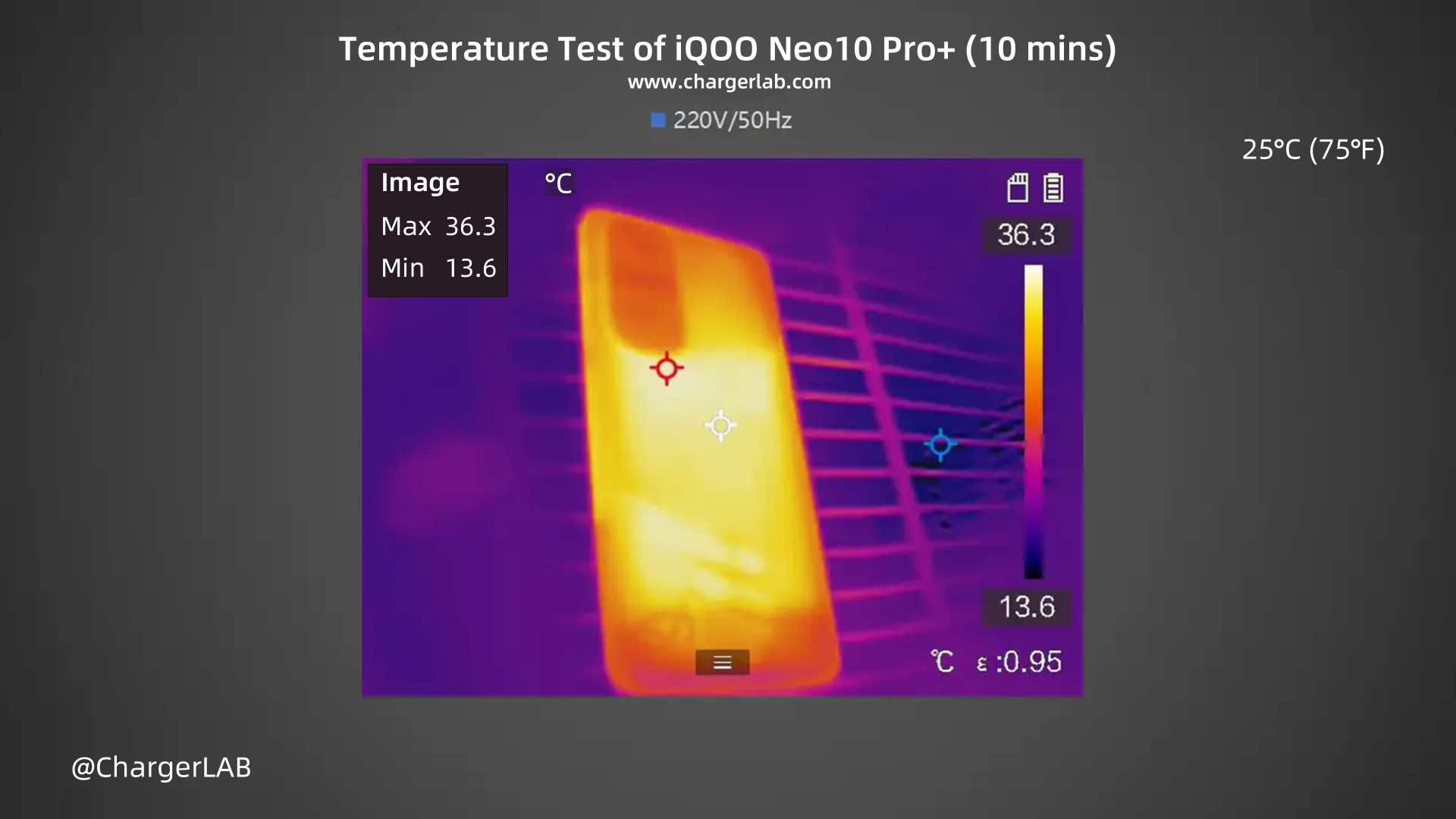
The back is 36.3℃ (97.34 ℉).
20 minutes Charging
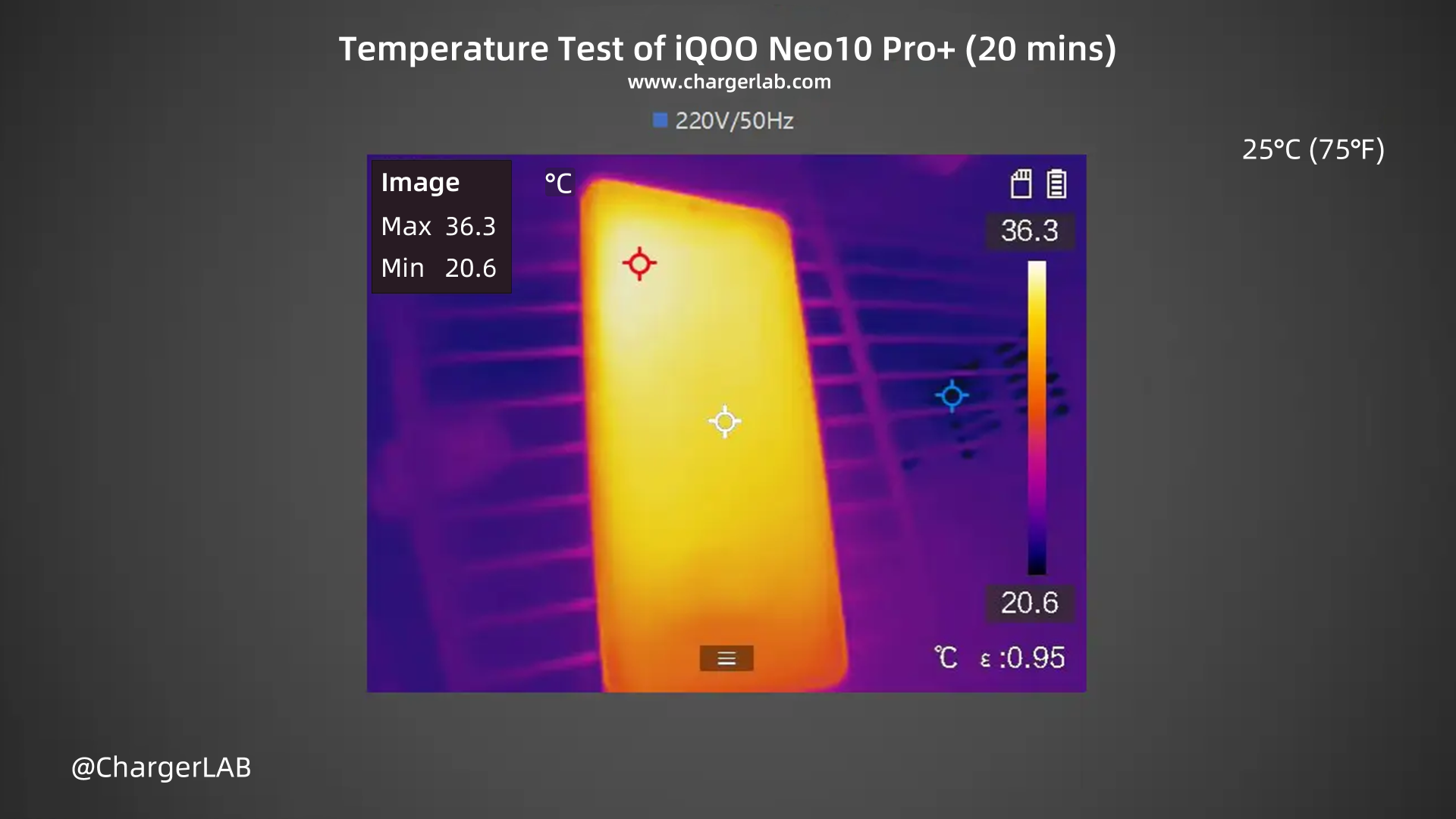
After 20 minutes, the maximum temperature on the front is 36.3℃ (97.34 ℉).
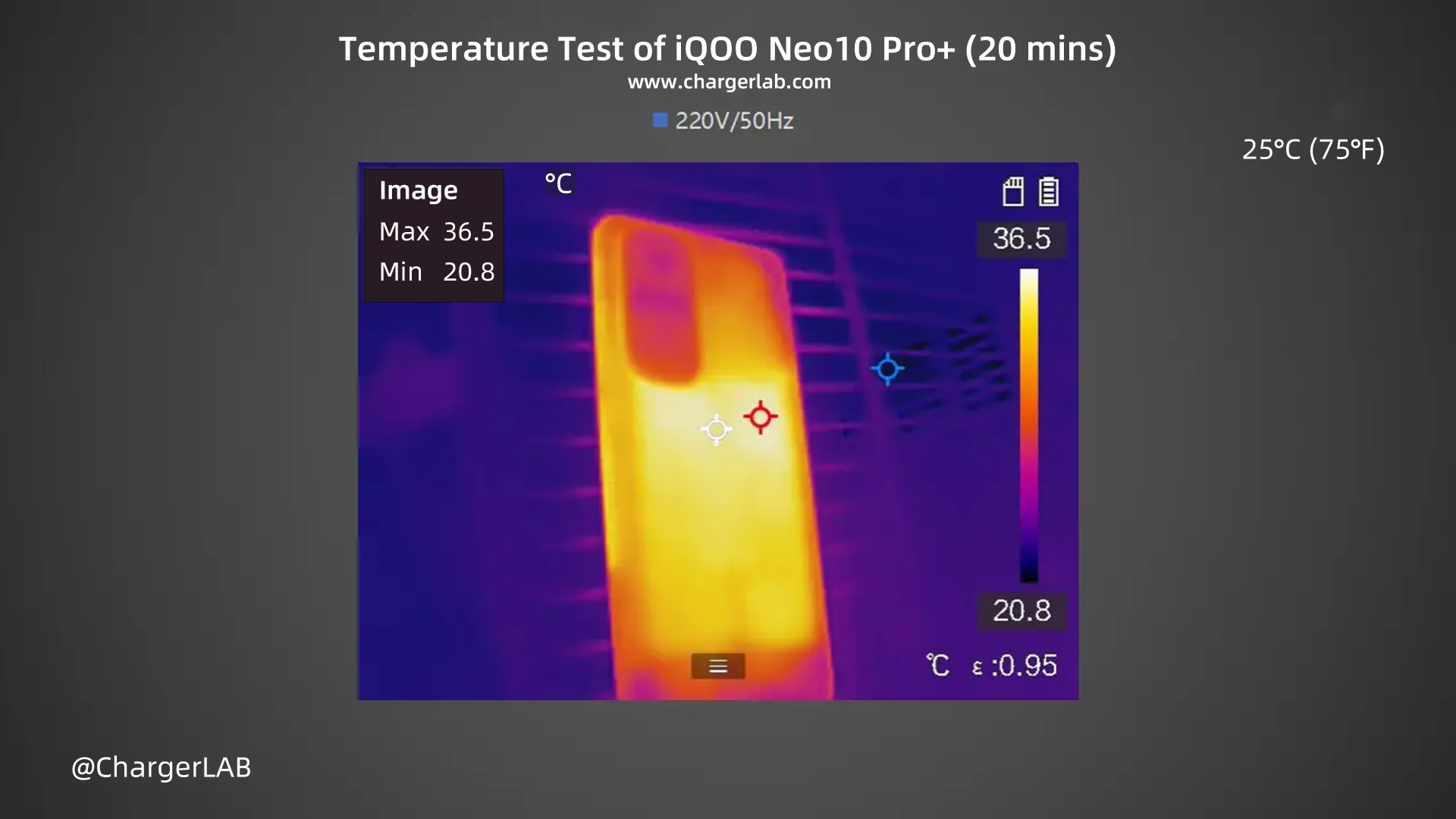
The back is 36.5℃ (97.7 ℉).
30 minutes Charging
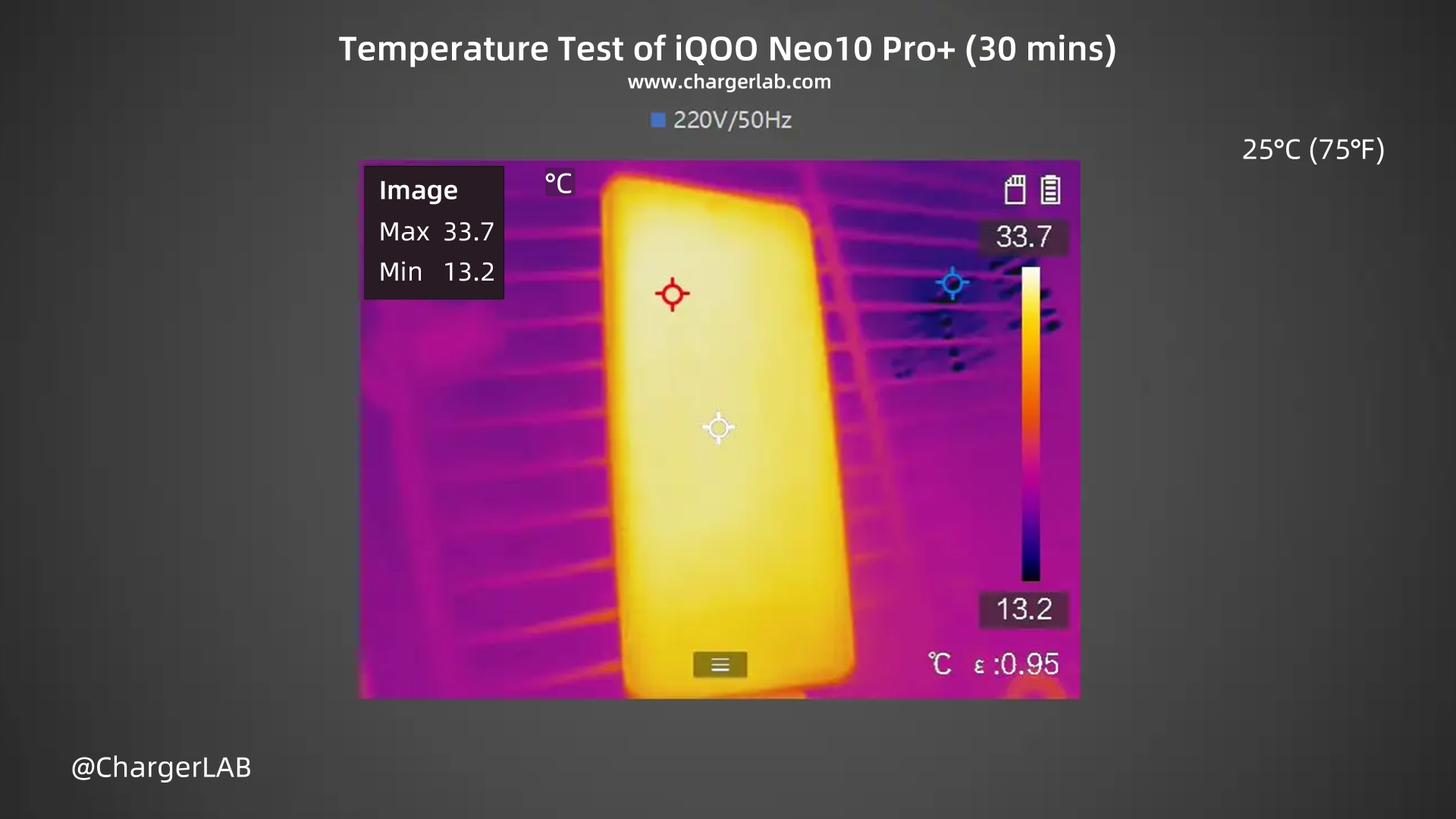
After 30 minutes, the maximum temperature on the front is 33.7℃ (92.66 ℉).
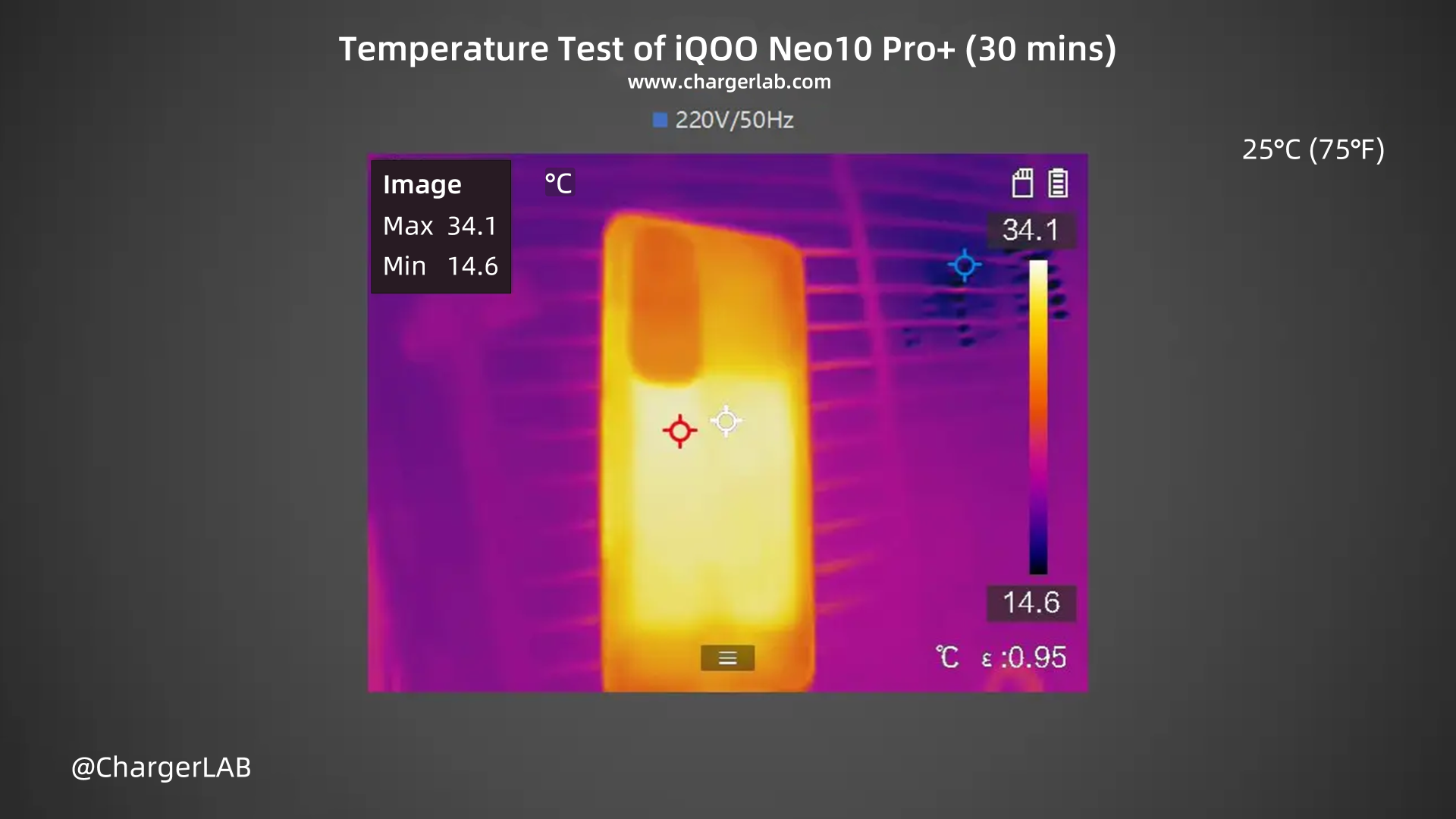
The back is 34.1℃ (93.38 ℉).
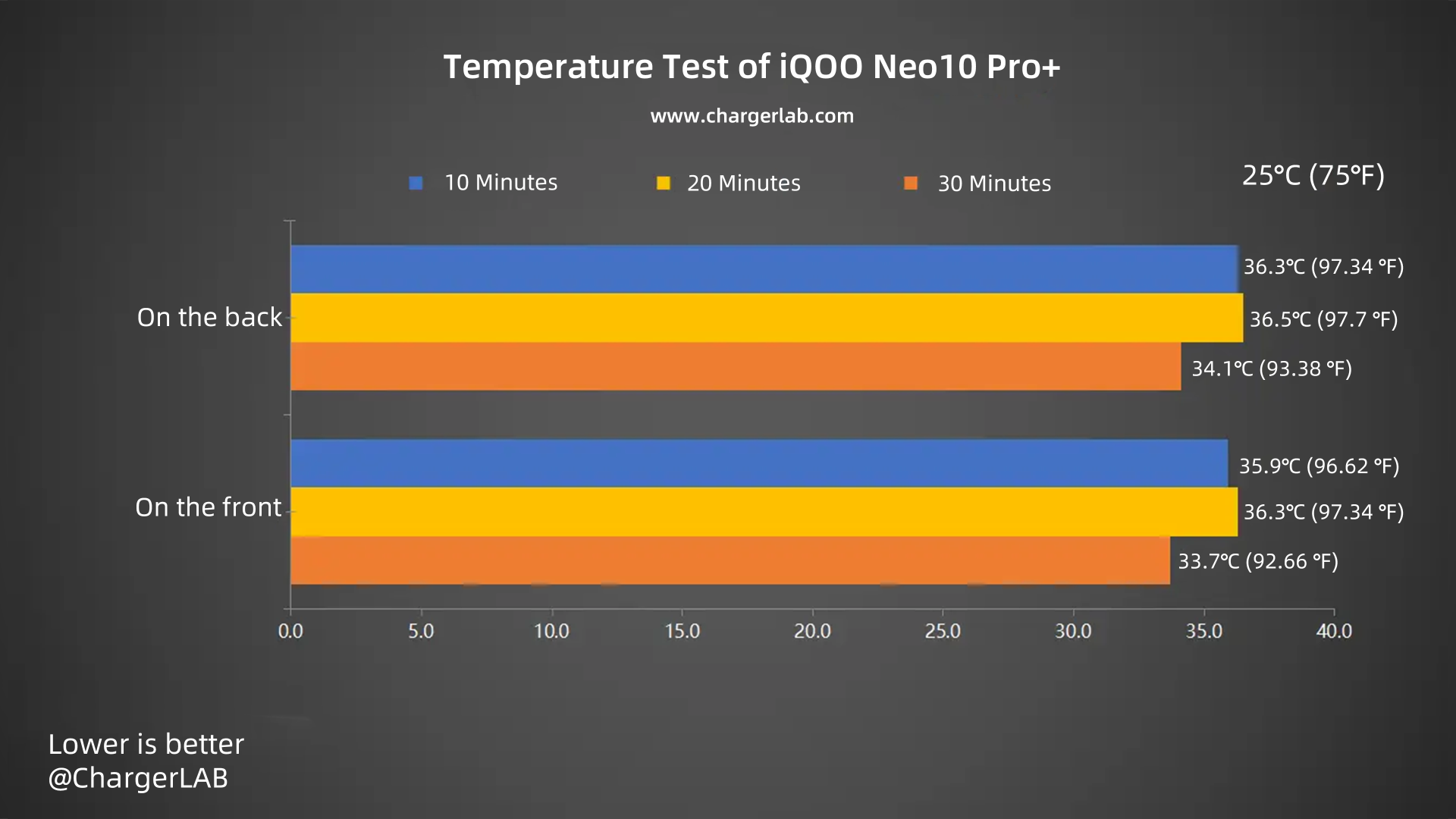
We also turn it into a bar chart. During charging for 30 minutes, the temperature is between 33.7 and 36.5°C. Combined with the power curve, it can be seen that the charging power remains consistently high throughout the process. Overall, the thermal management performs very well.
Summary of ChargerLAB
The iQOO Neo10 Pro+ offers significantly better compatibility with third-party chargers and power banks compared to other smartphones in its class. It supports PPS at 100W, PD at 100W, and UFCS at 44W, with a peak charging power of around 80W when using supported adapters. Using the included 120W charger, it reaches 50% in just 26 minutes and a full charge in only 42 minutes. During charging, the maximum temperature stays at just 36.5°C, demonstrating excellent thermal control.
Overall, the iQOO Neo10 Pro+ brings flagship-level features to a broader audience, offering top-tier performance, display quality, battery life, and imaging capabilities. Additionally, practical features such as offline communication, an ultrasonic 3D fingerprint sensor, dual stereo speakers, and IP65-rated dust and water resistance further enhance its versatility in everyday scenarios. These advantages make it a highly competitive option in the mid-range smartphone market.
Related Articles:
1. Charging Review of iQOO Z10 Turbo Pro
2. Charging Review of Honor Power
3. Charging Review of OnePlus 13T

